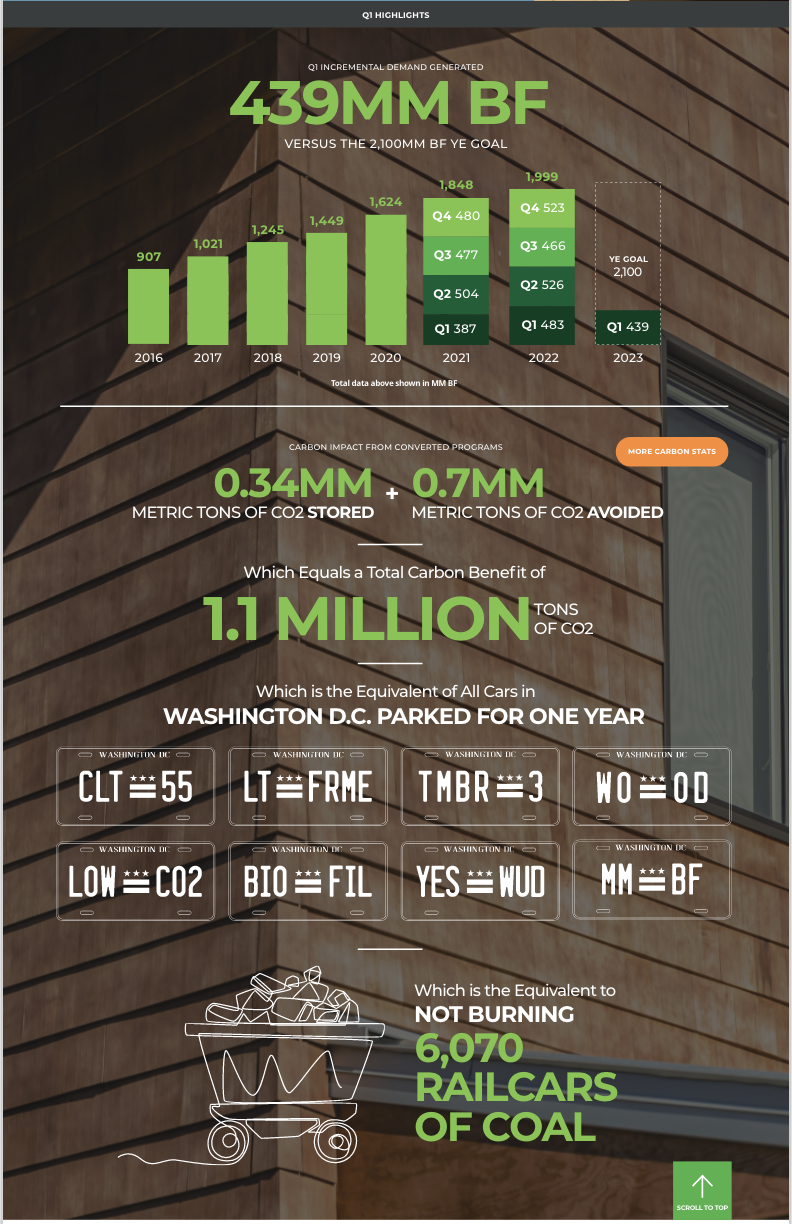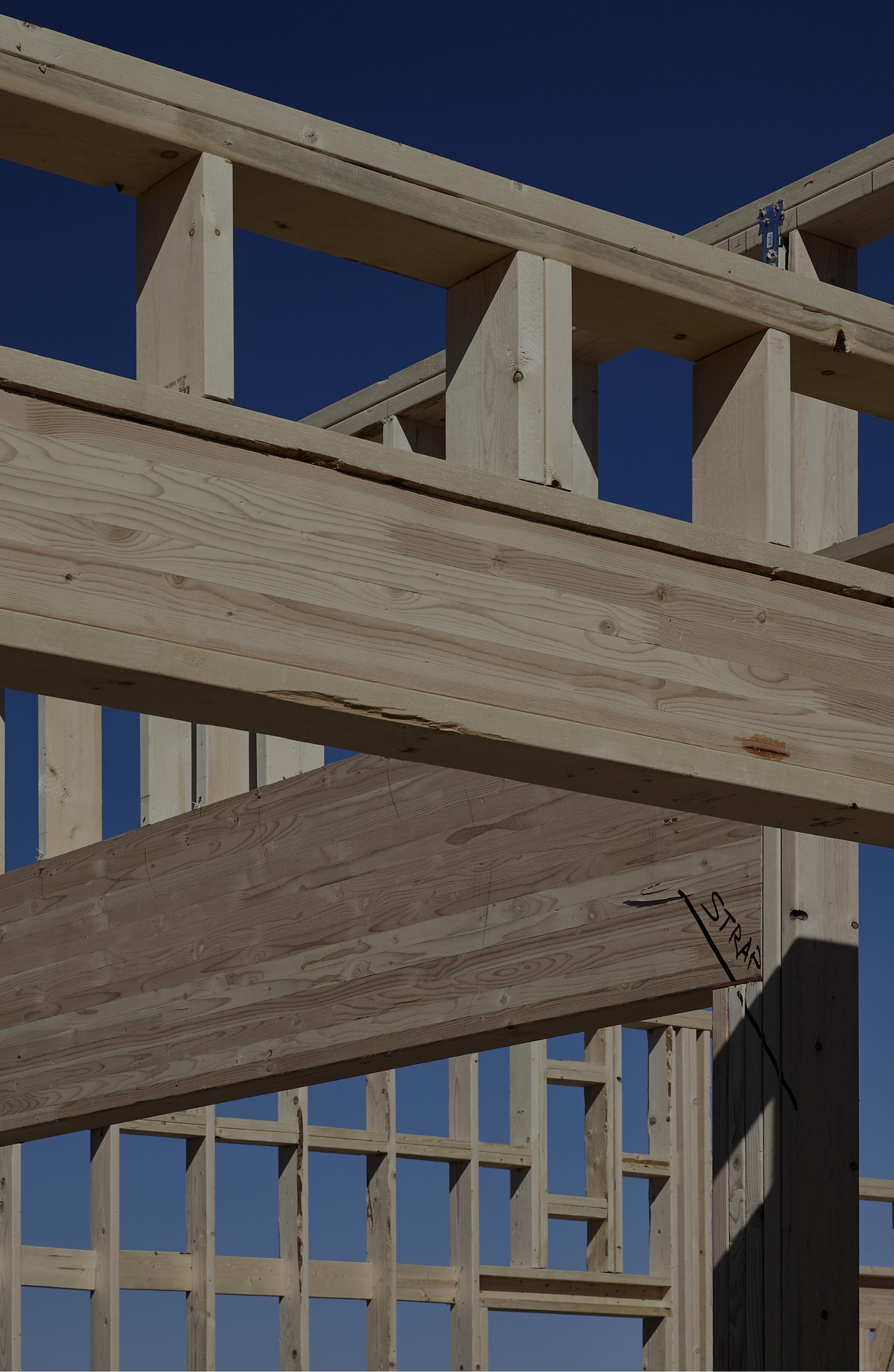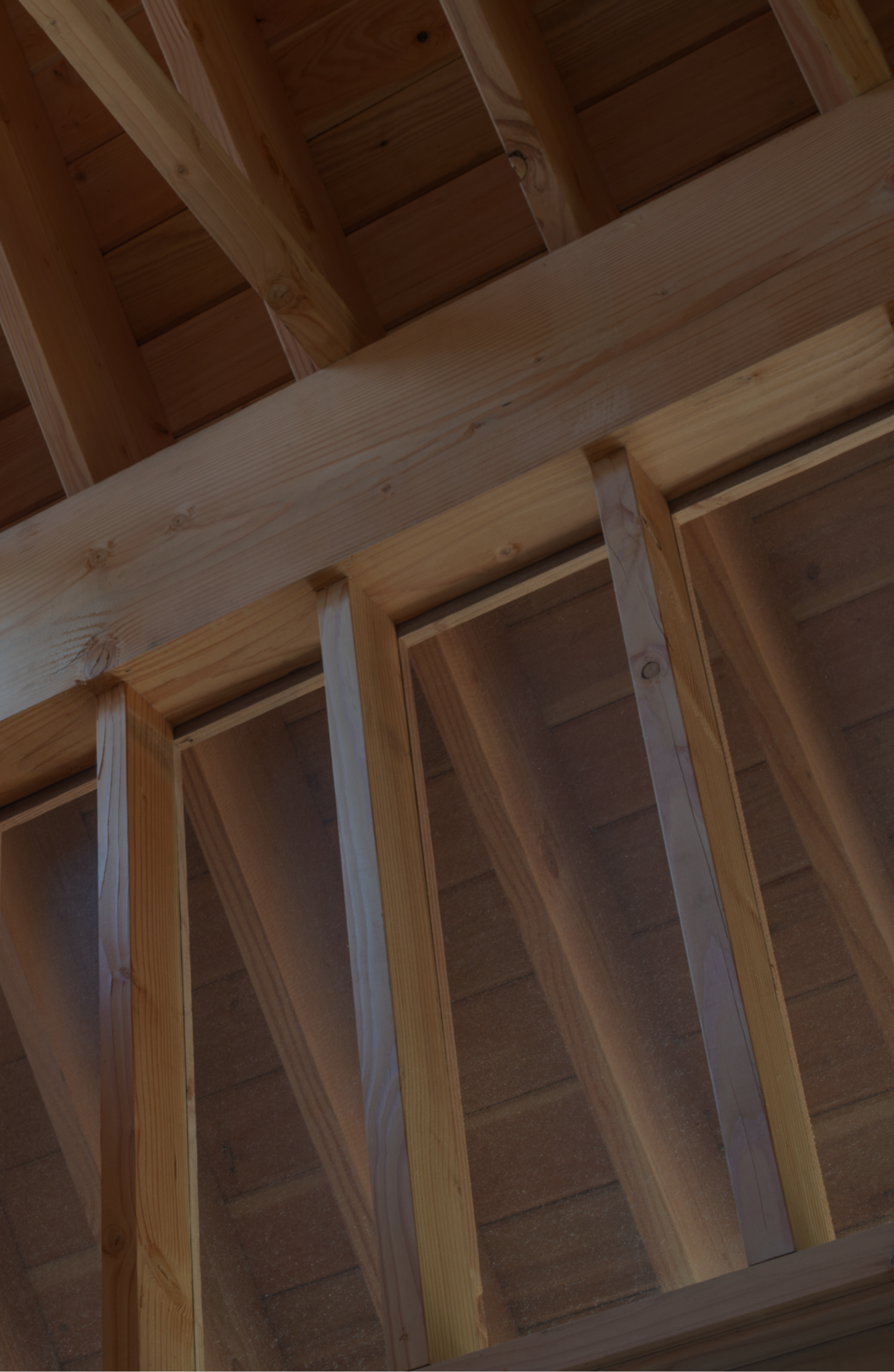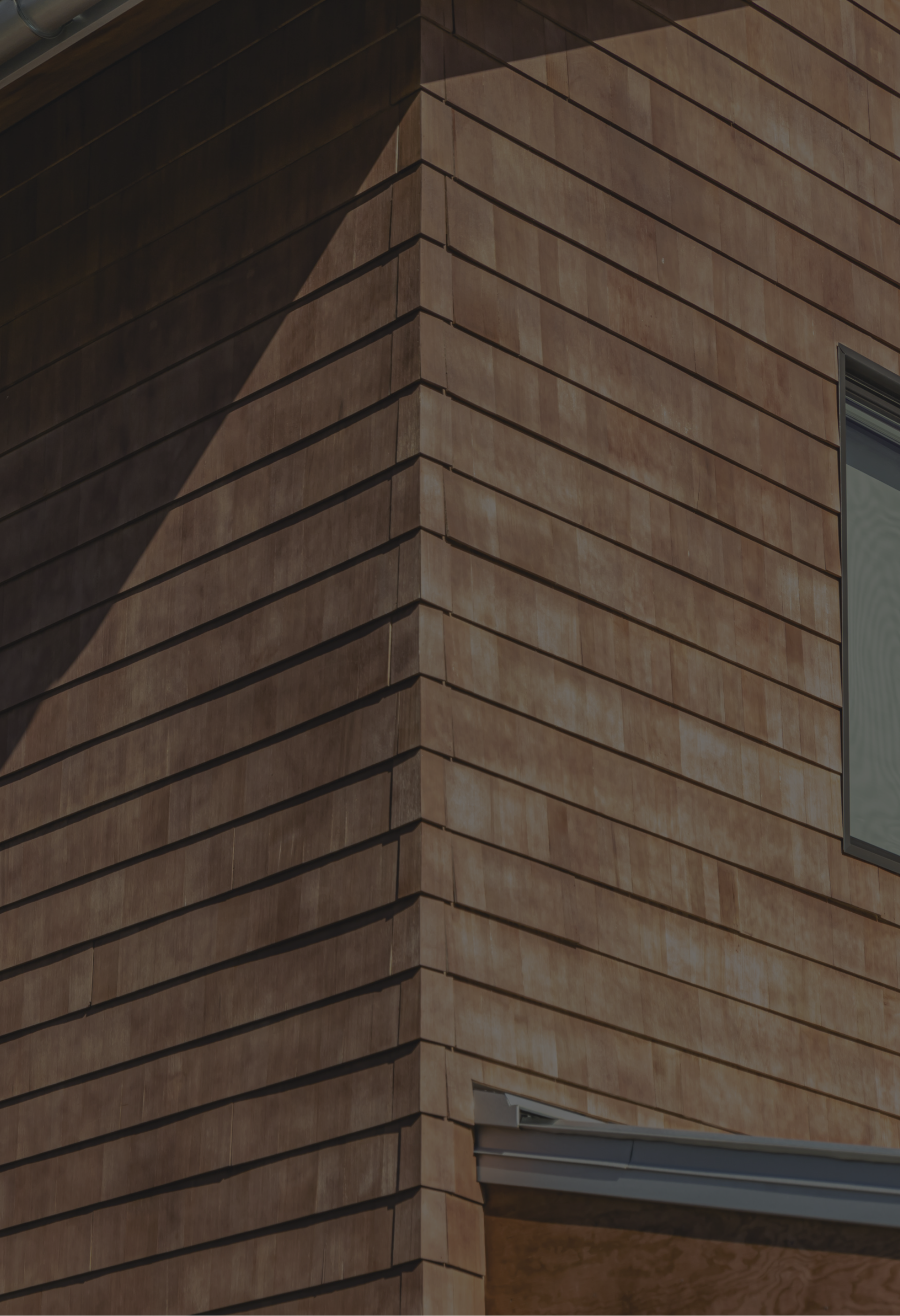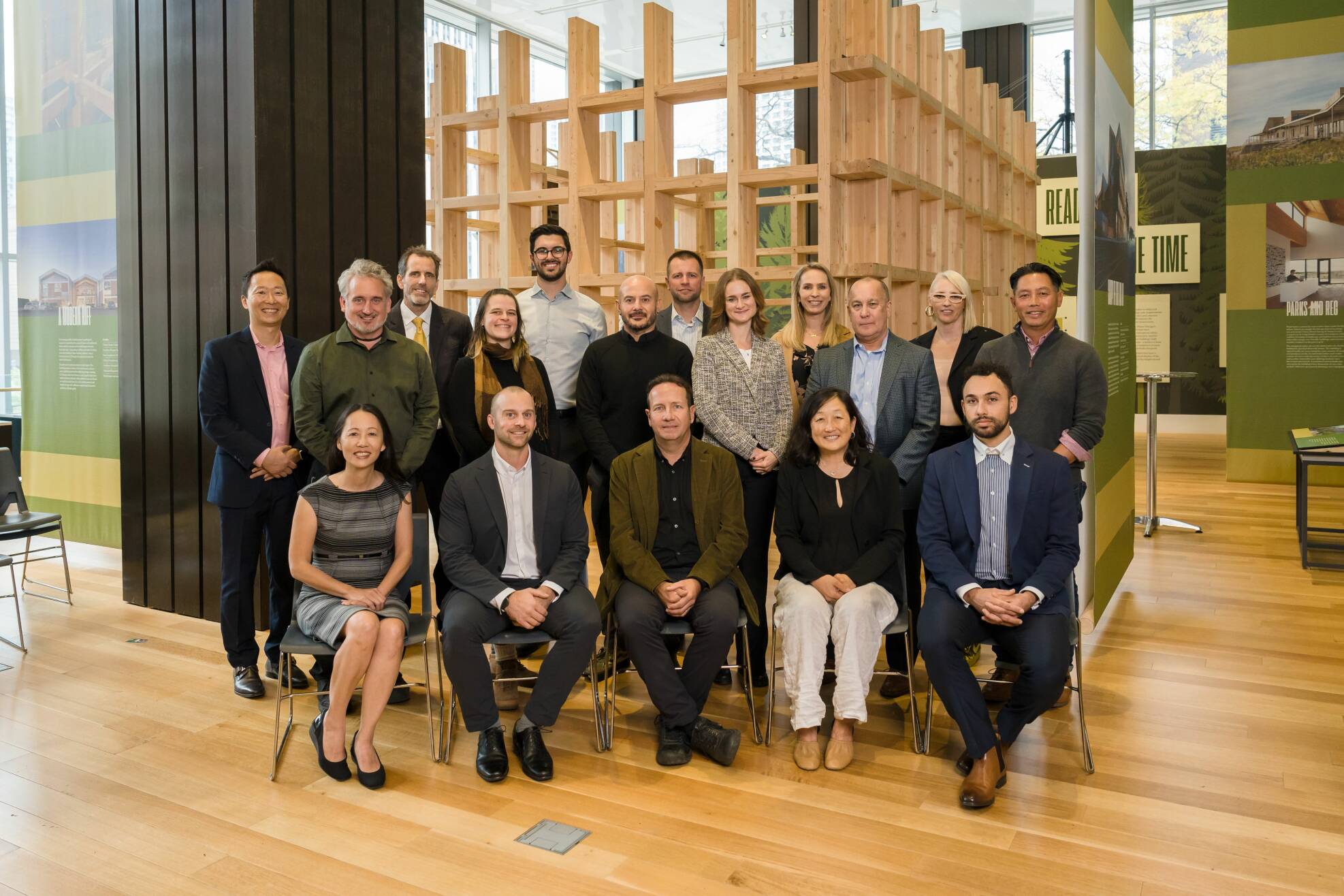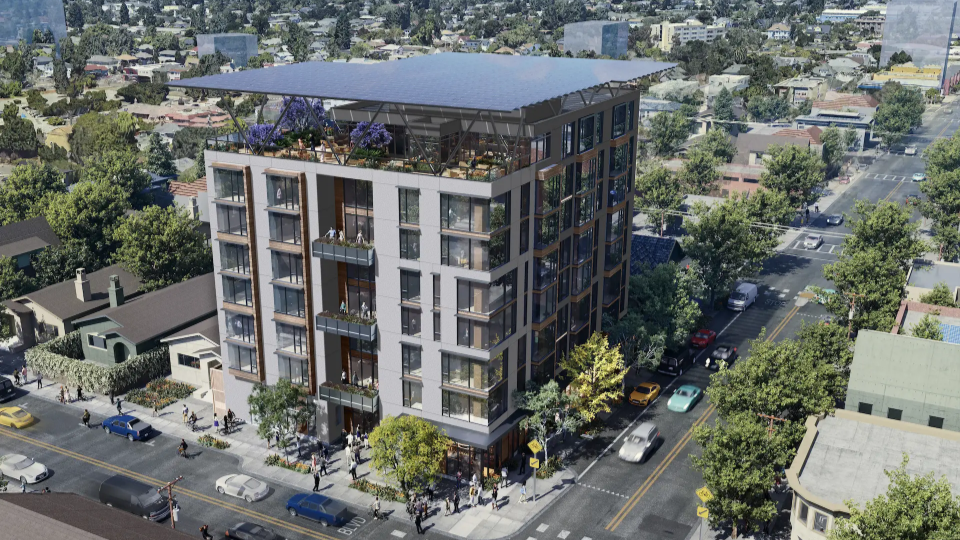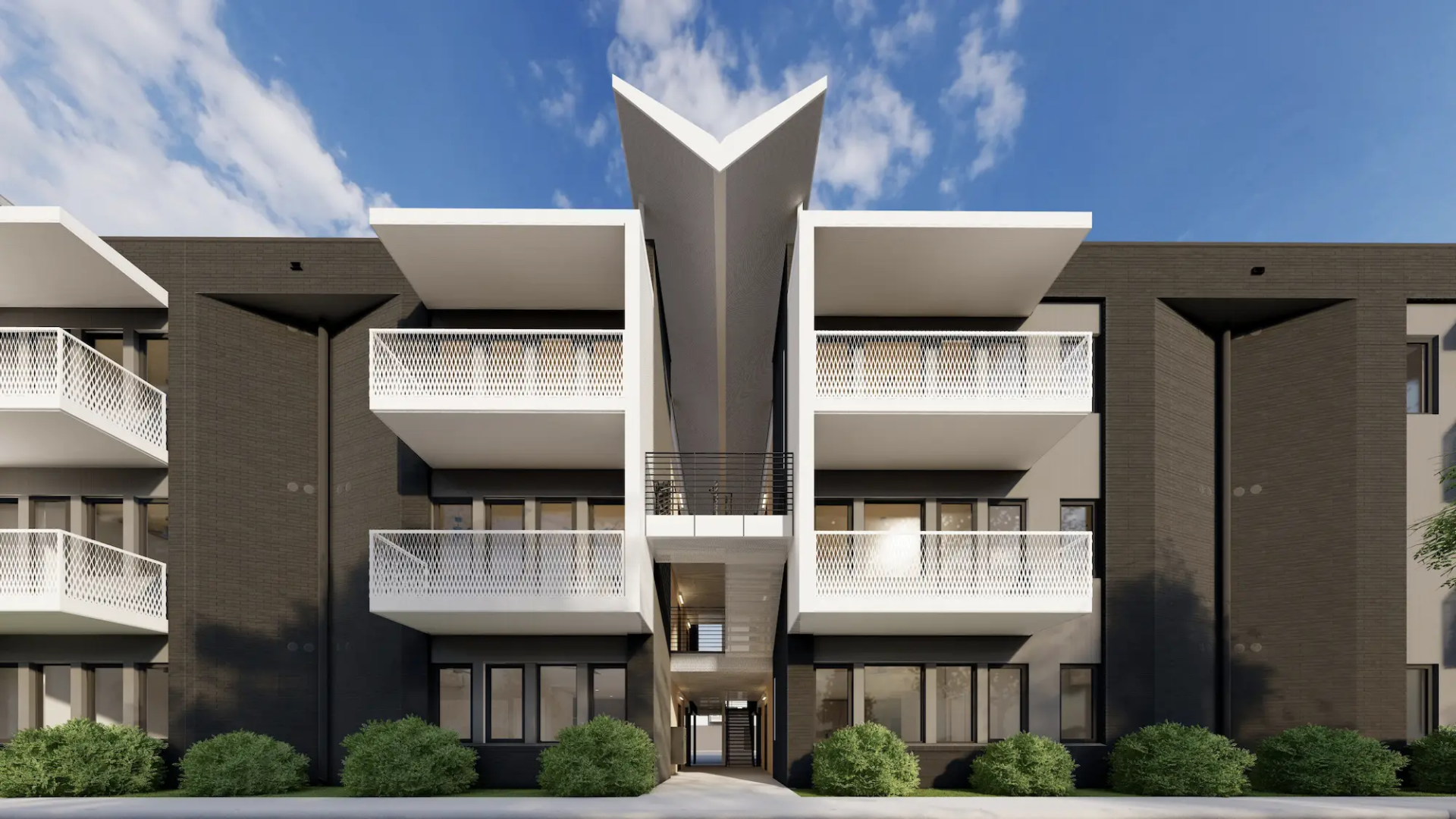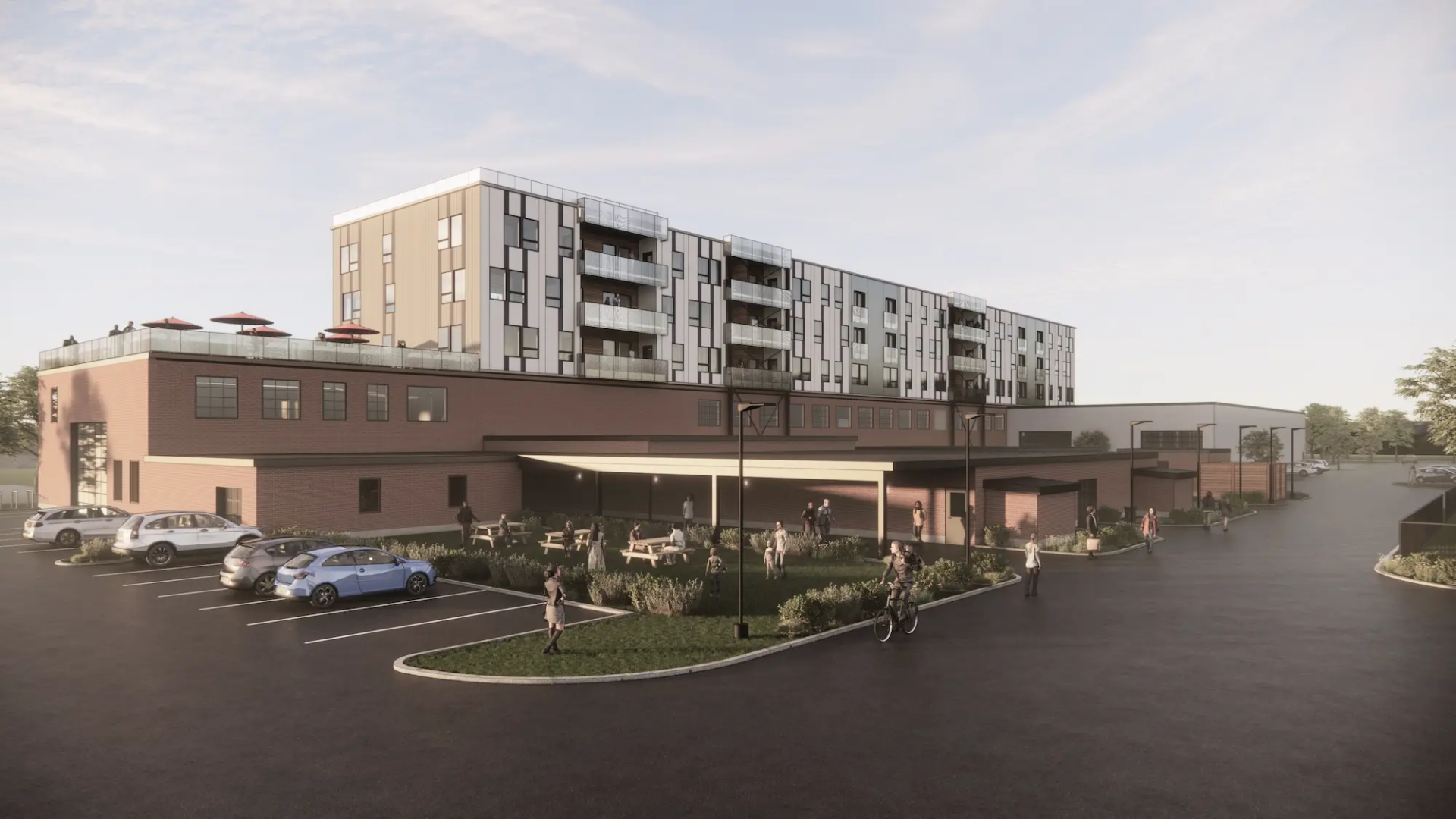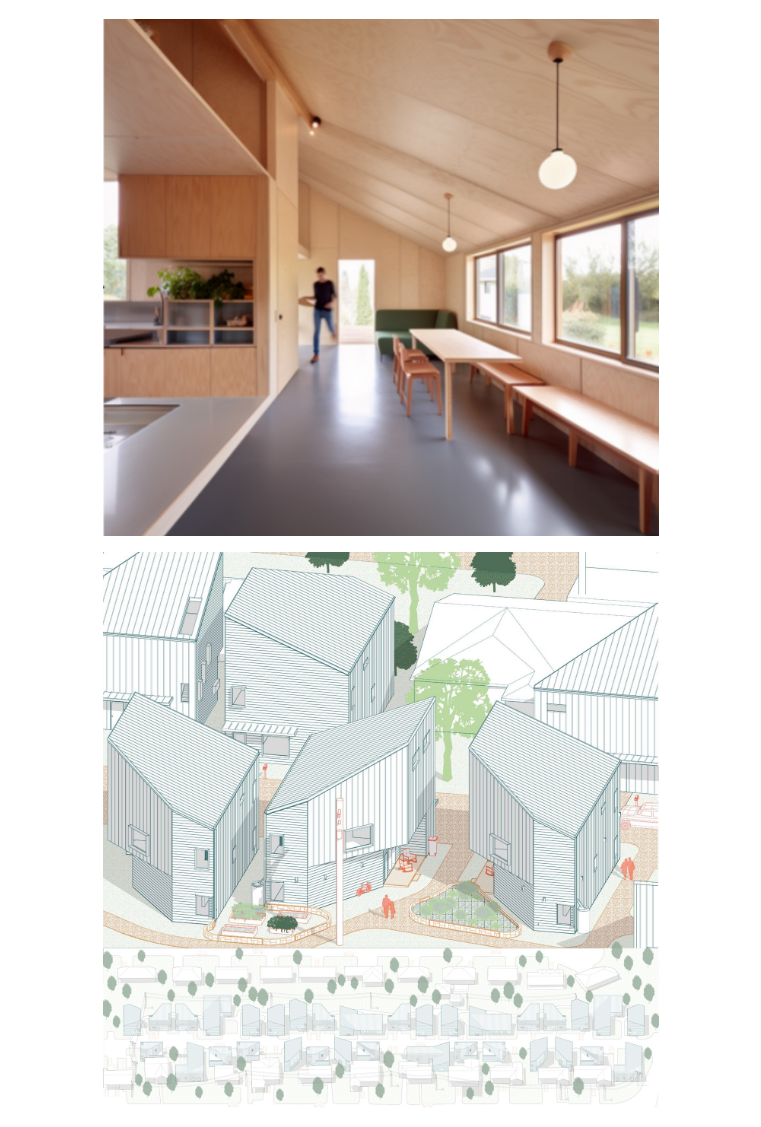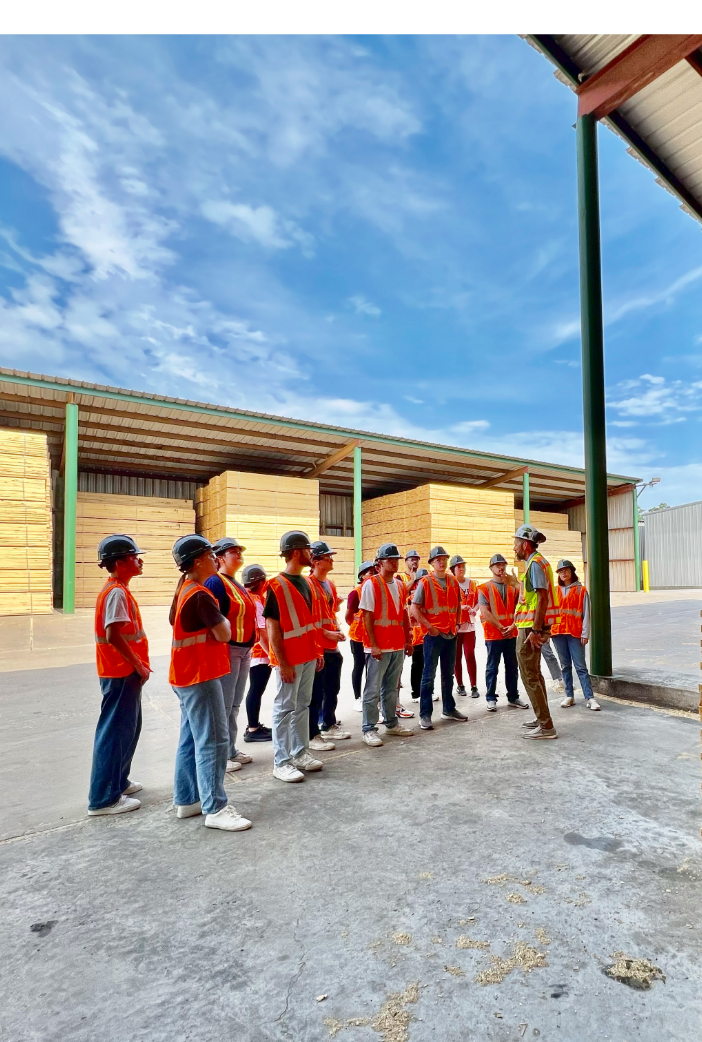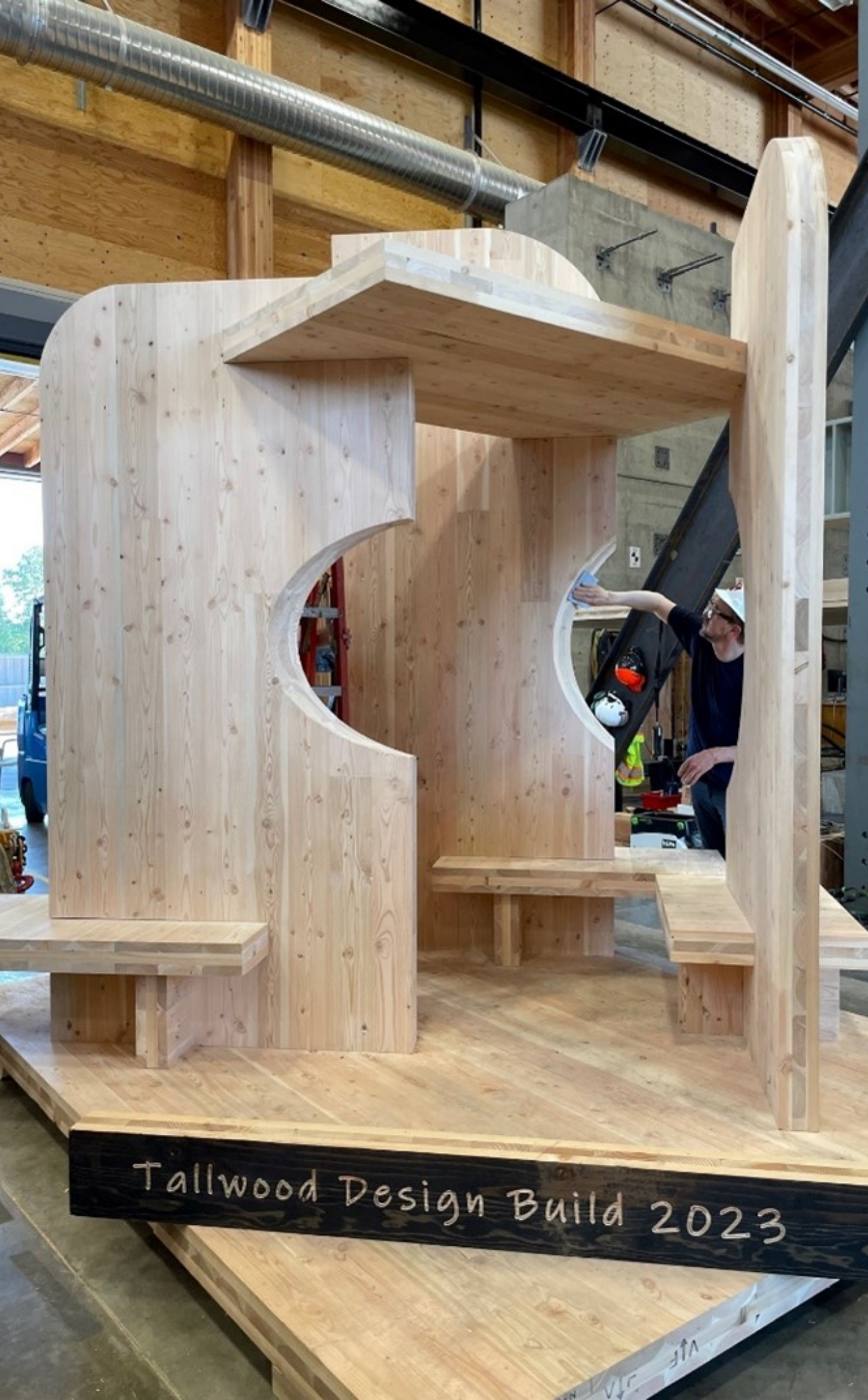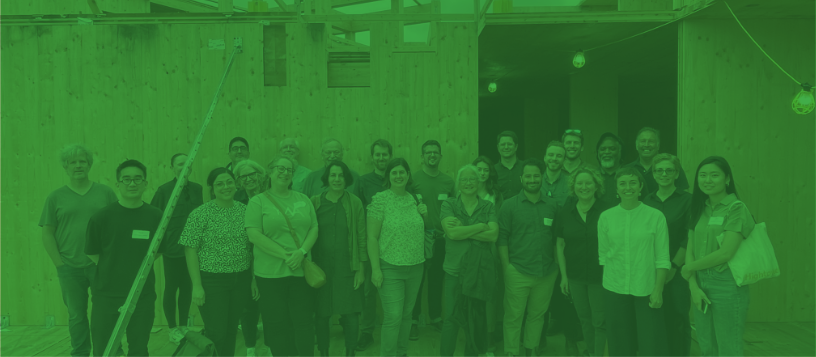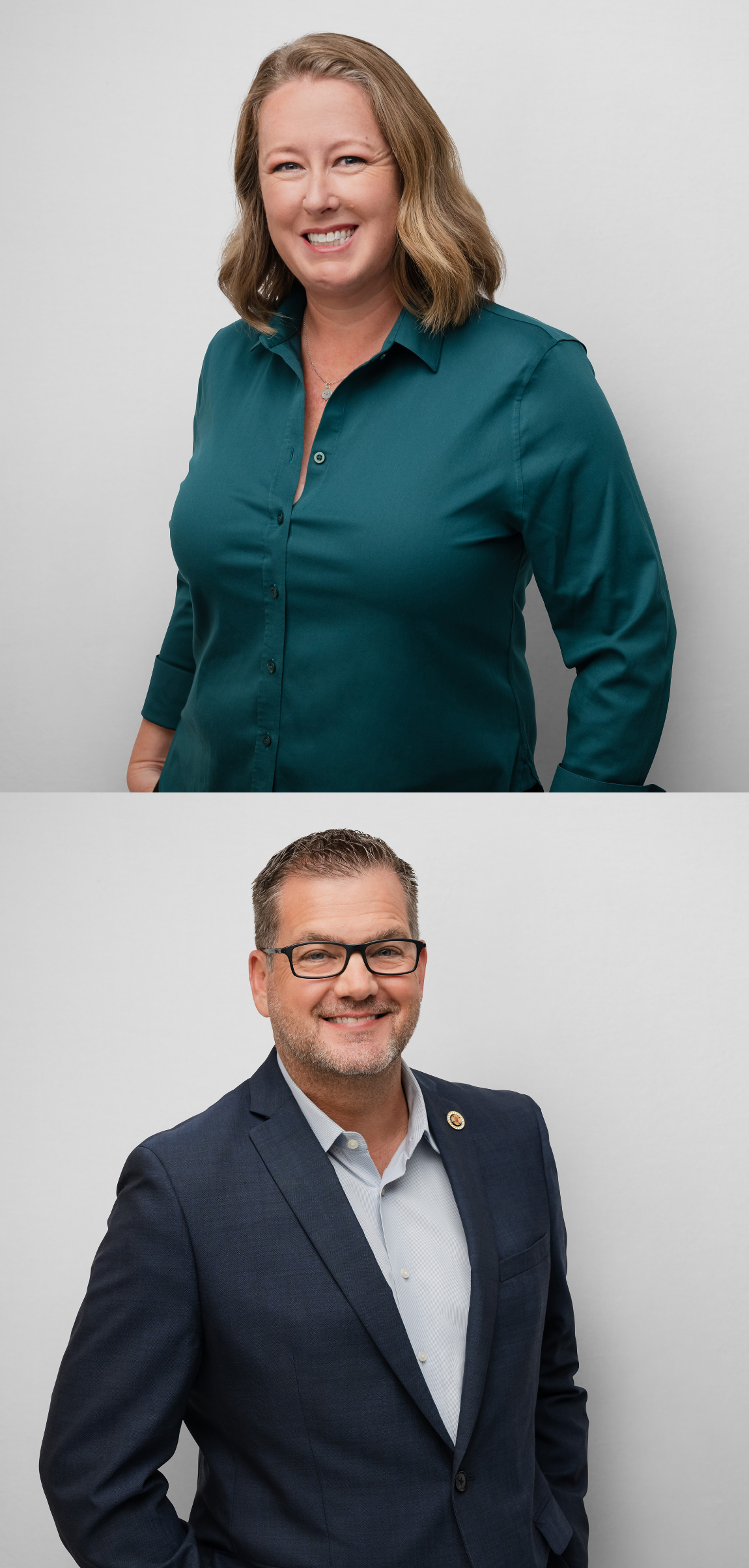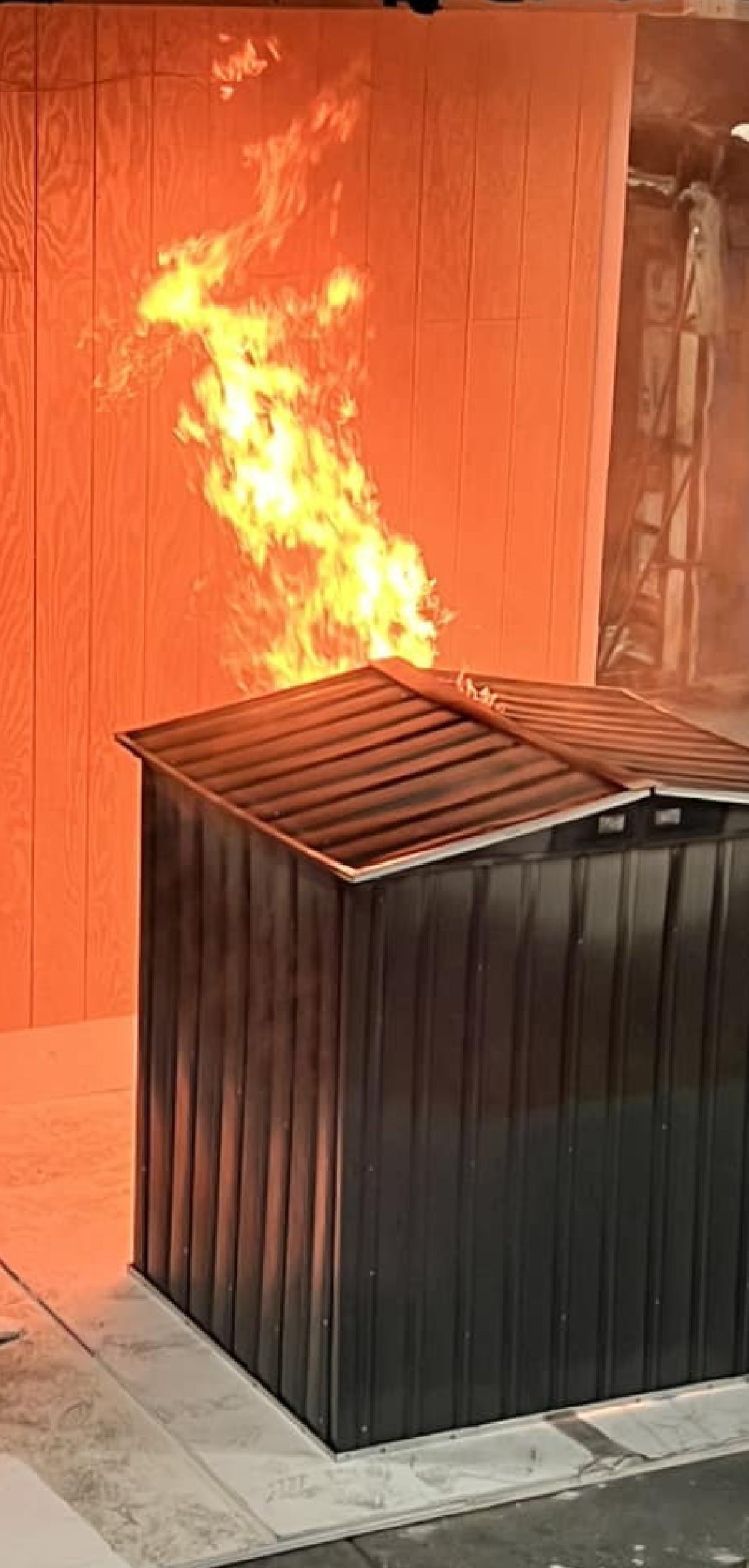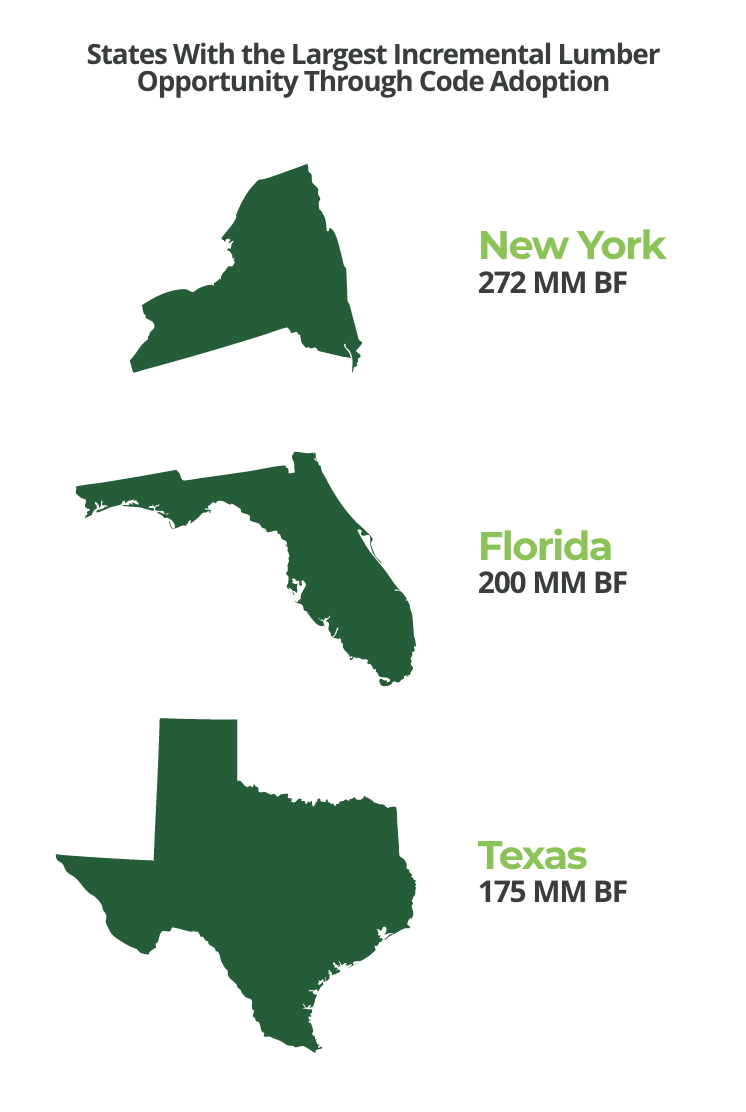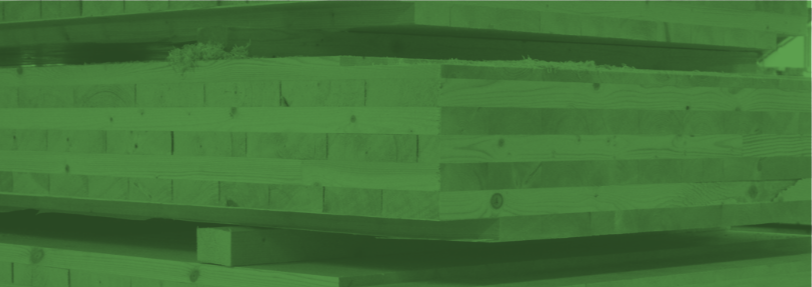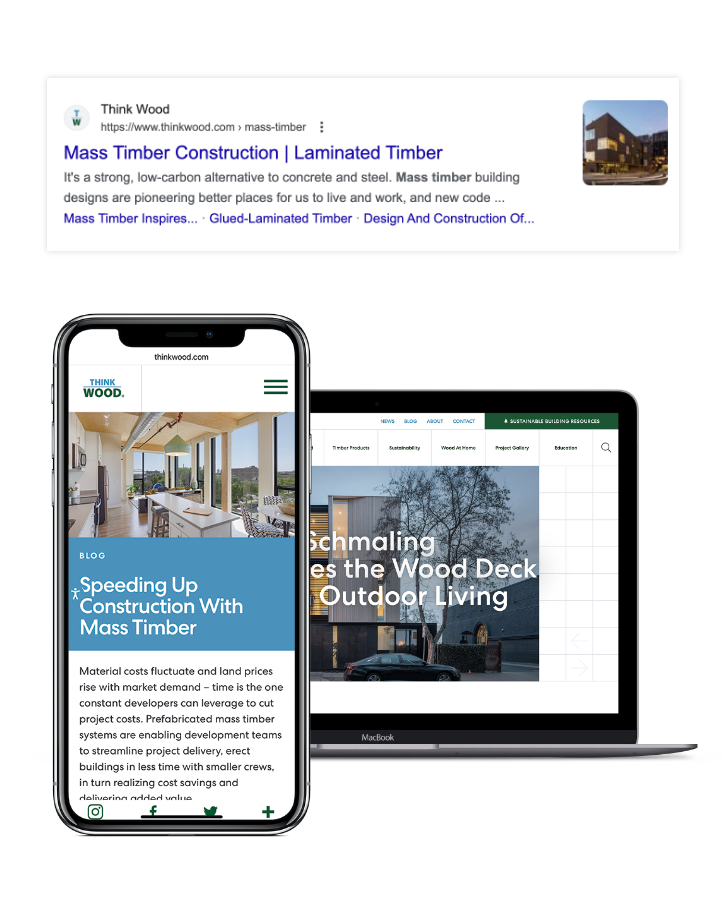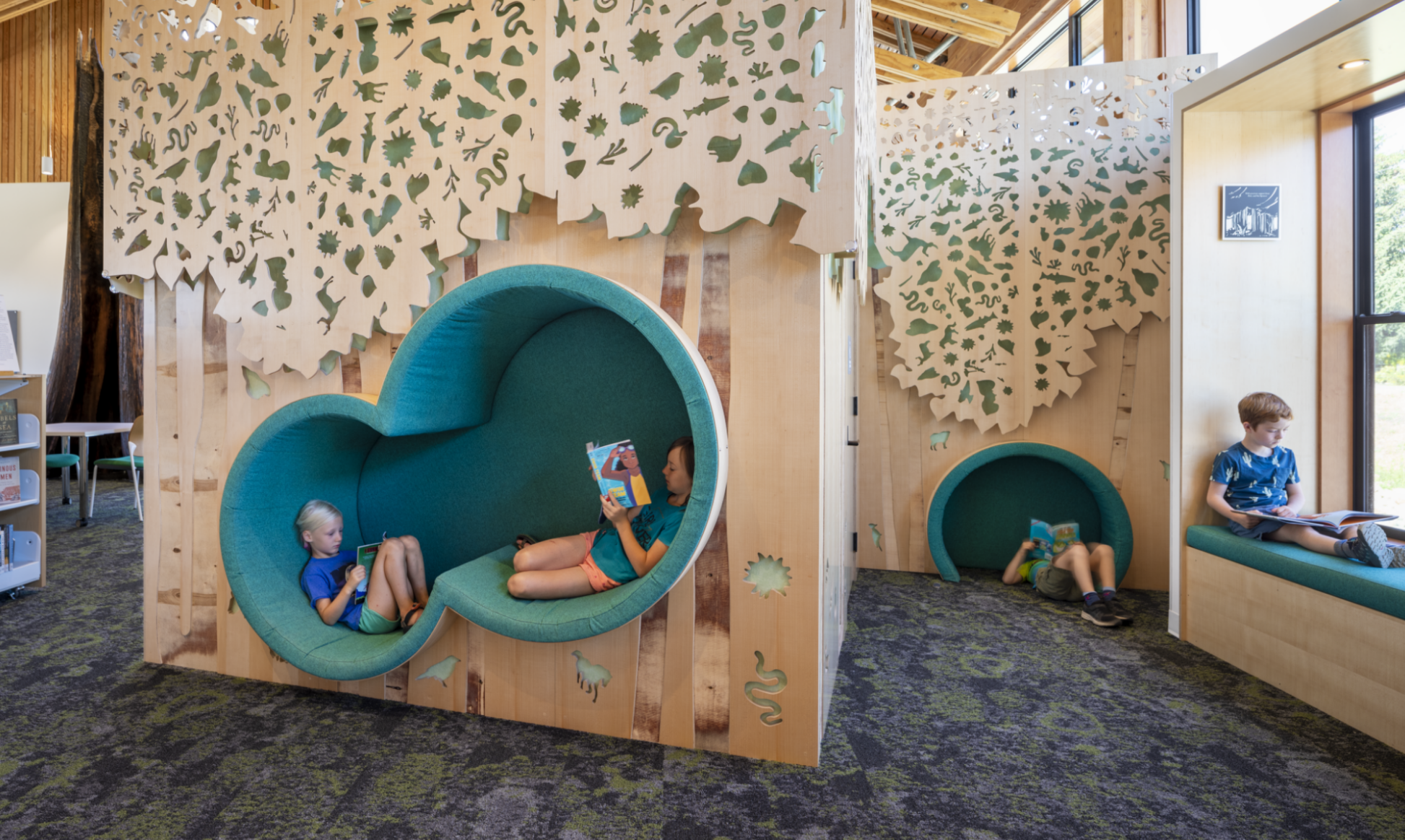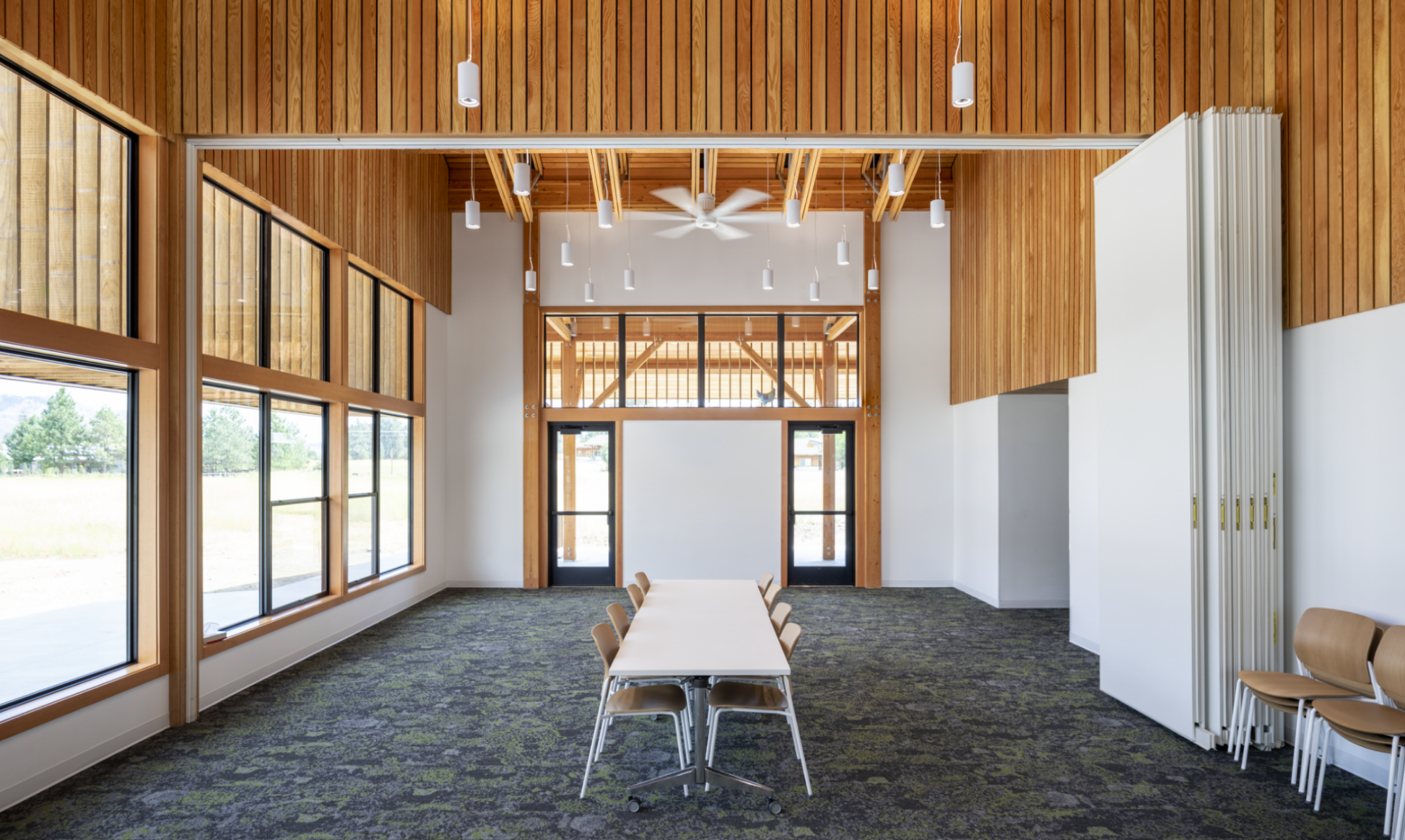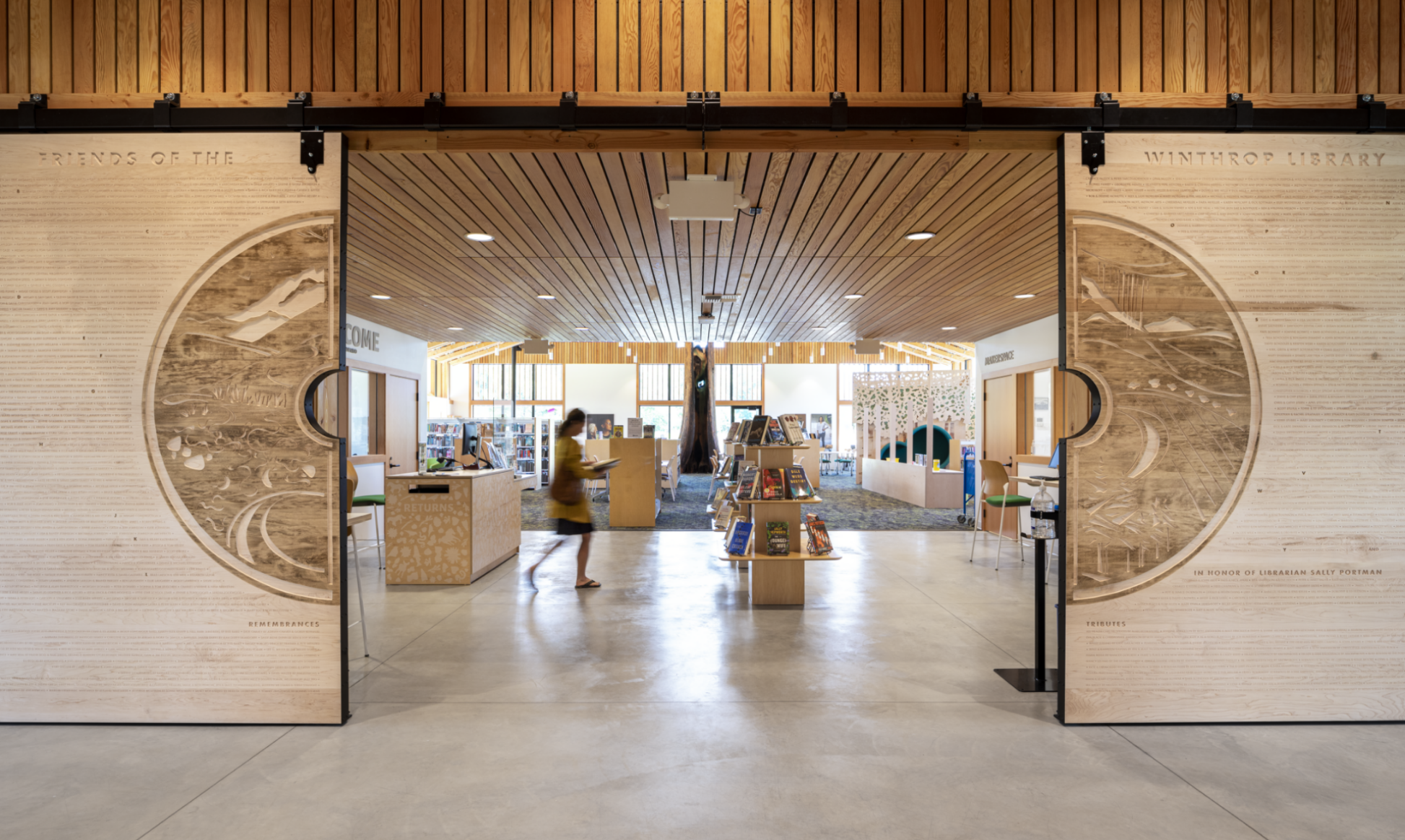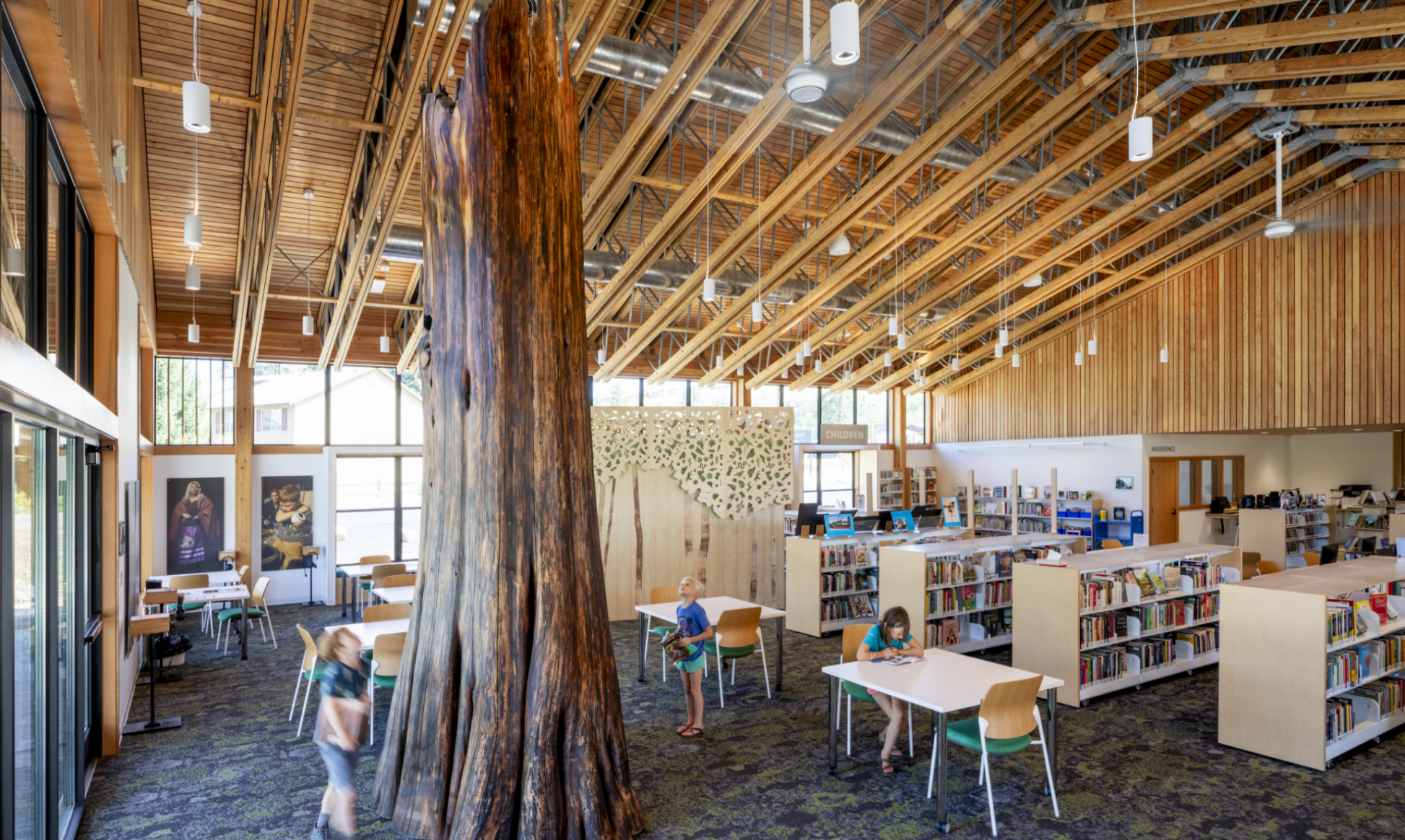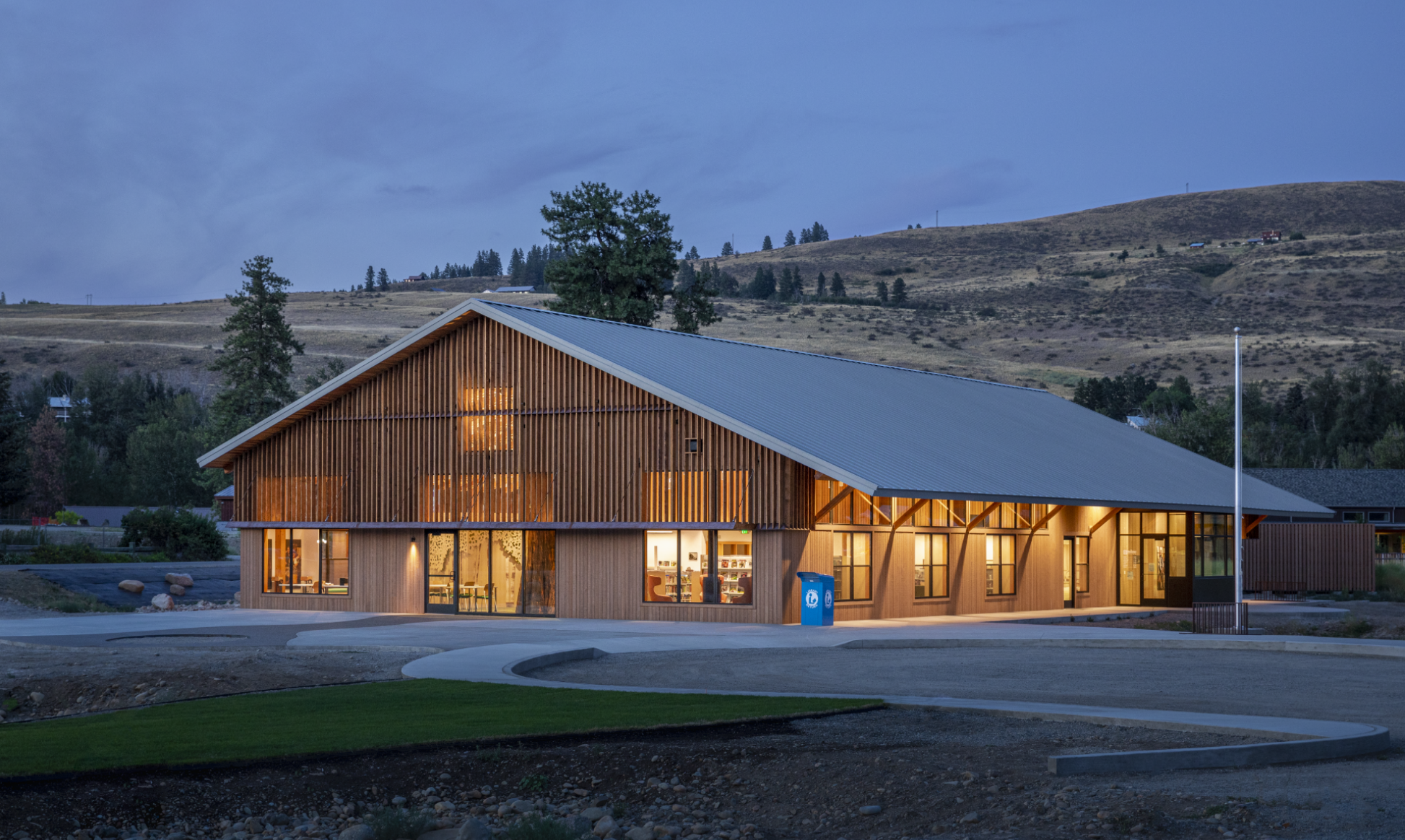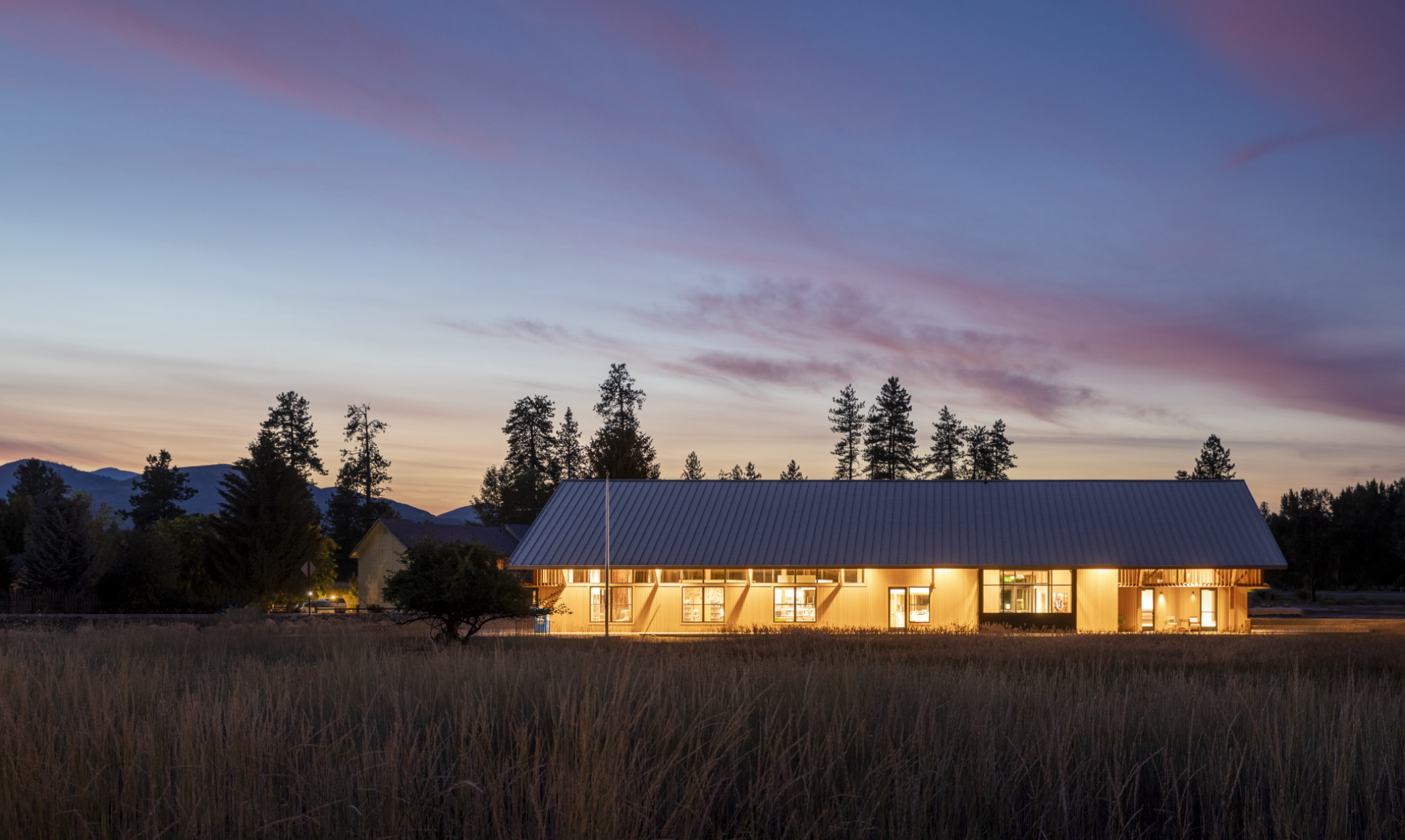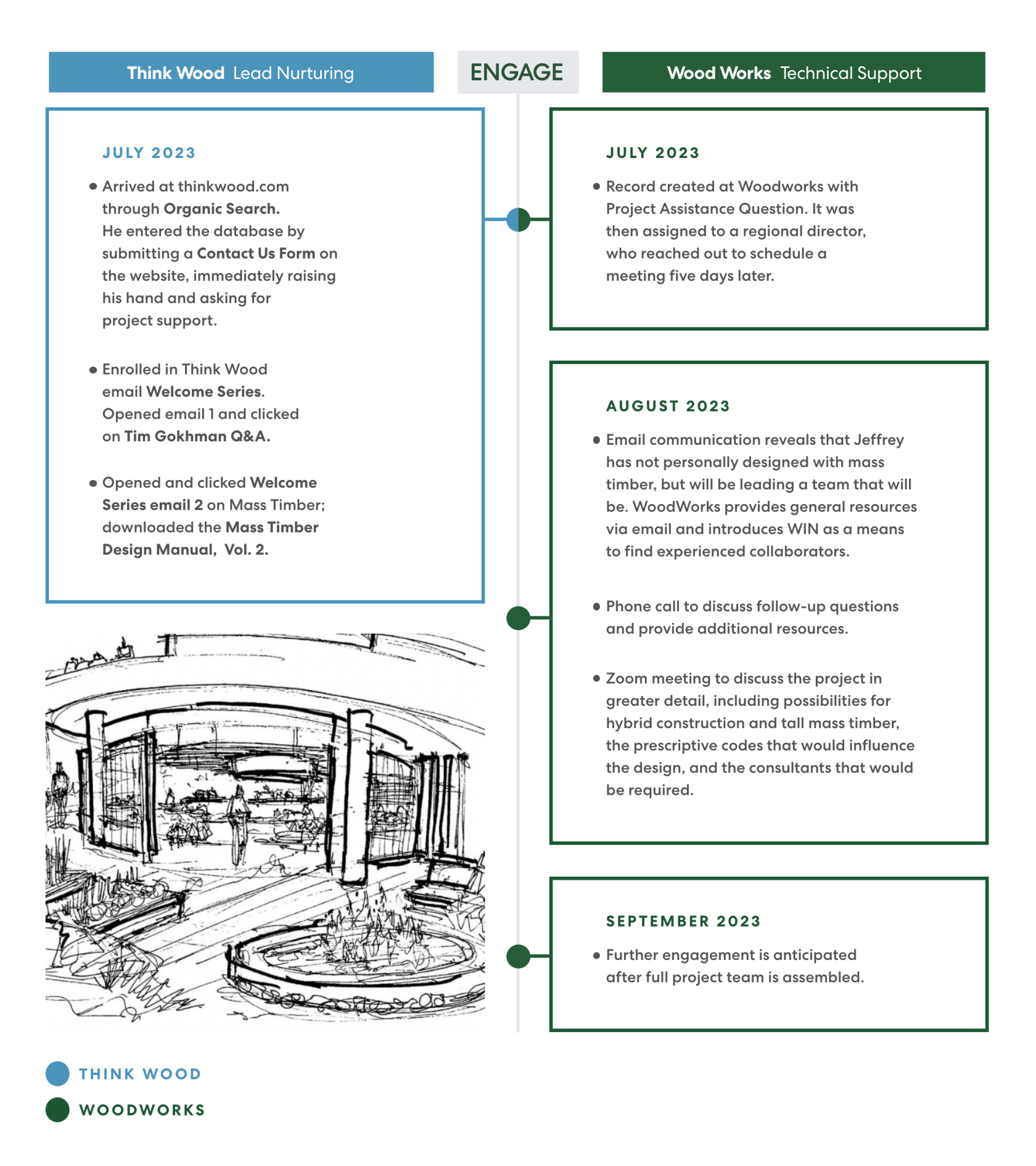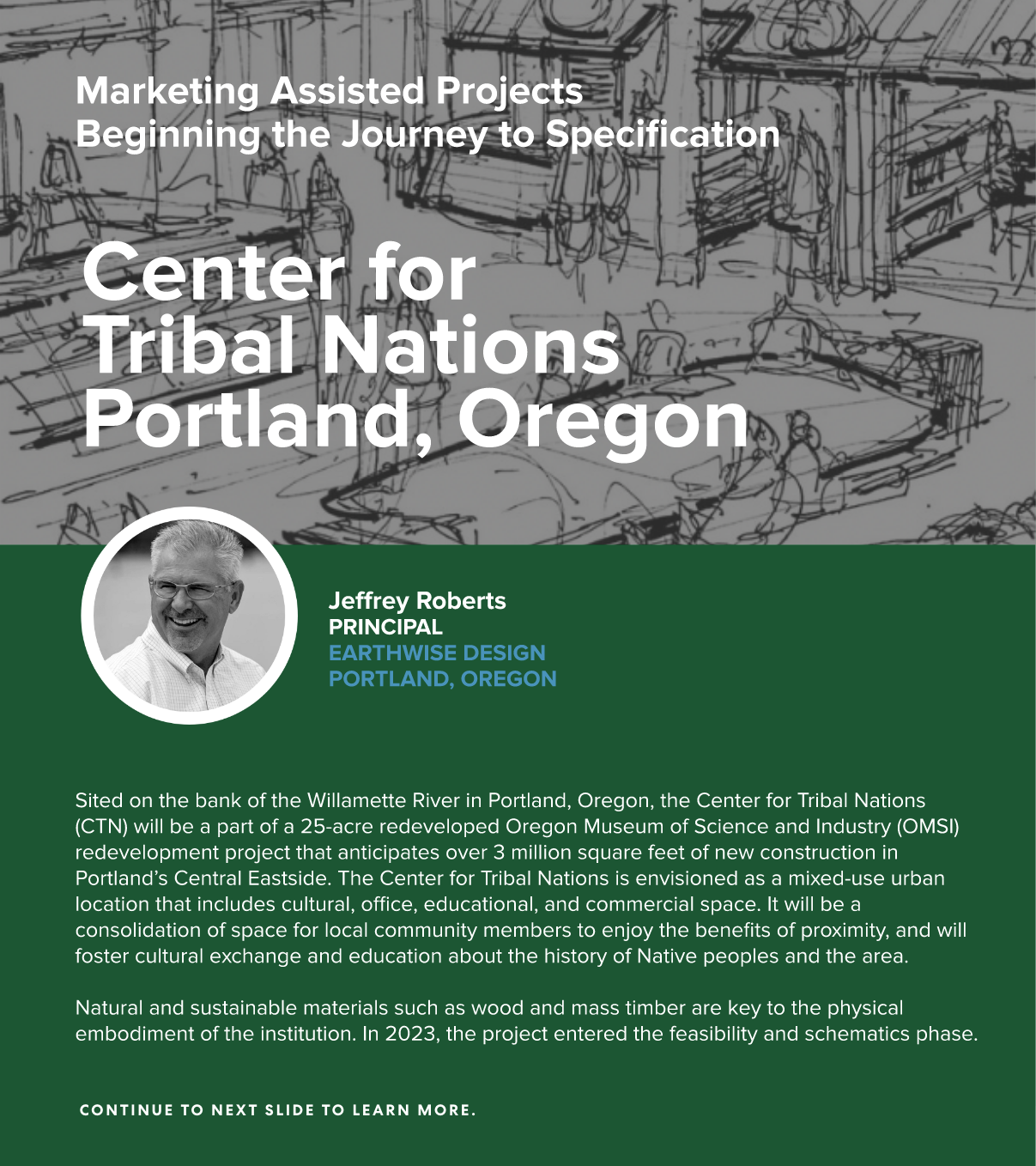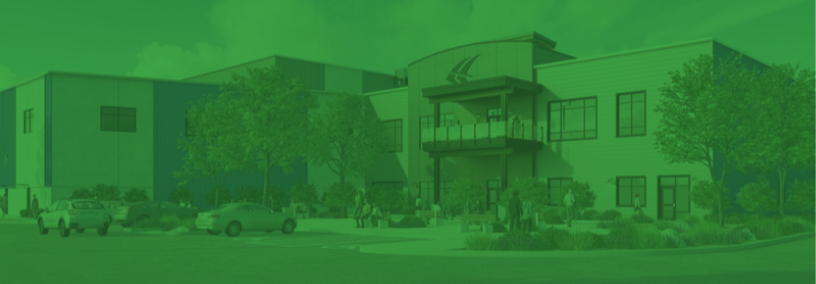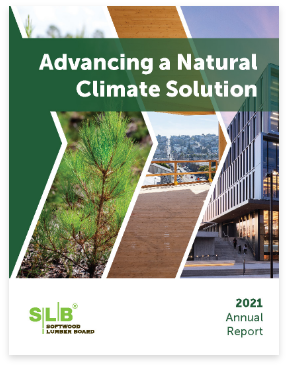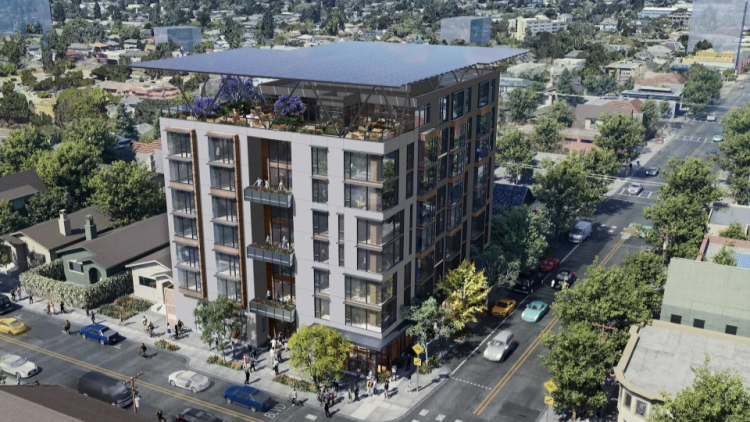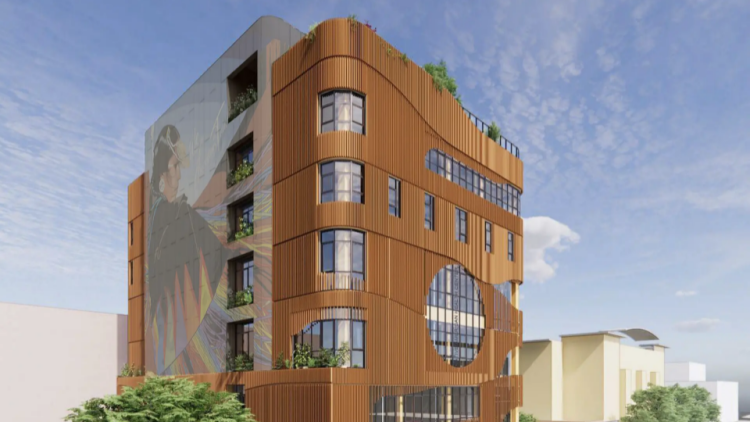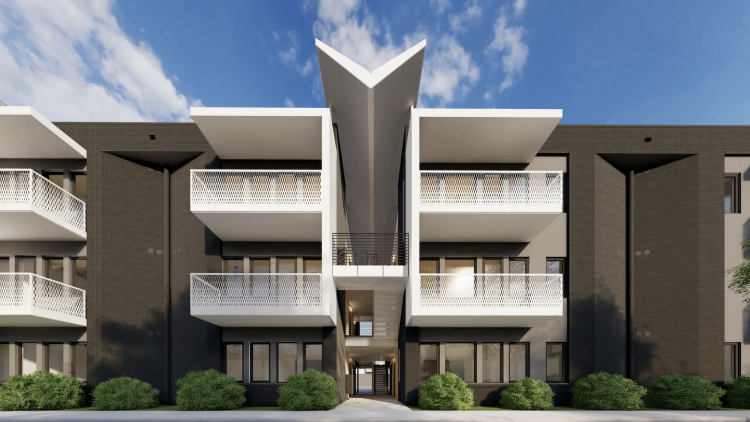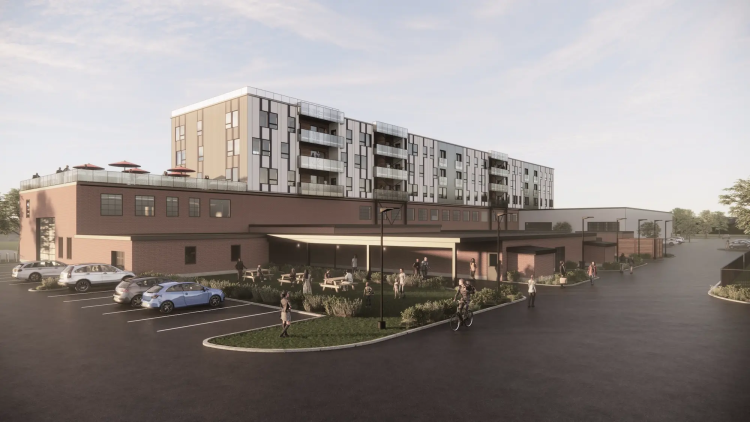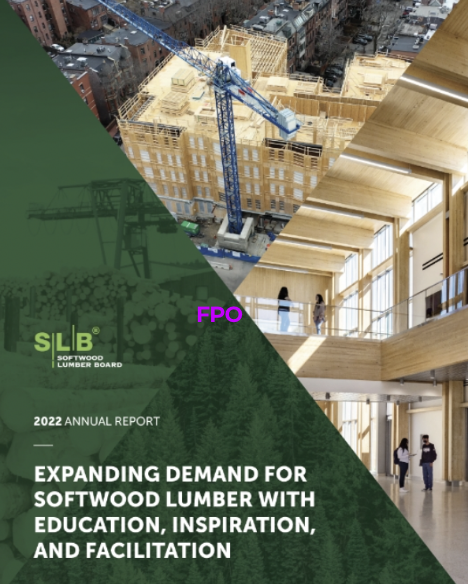


SCROLL TO TOP

Q3 HIGHLIGHTS
1,391
2,100
1.2 MILLION
OF CO2



RAILCARS
RAILCARS
RAILCARS
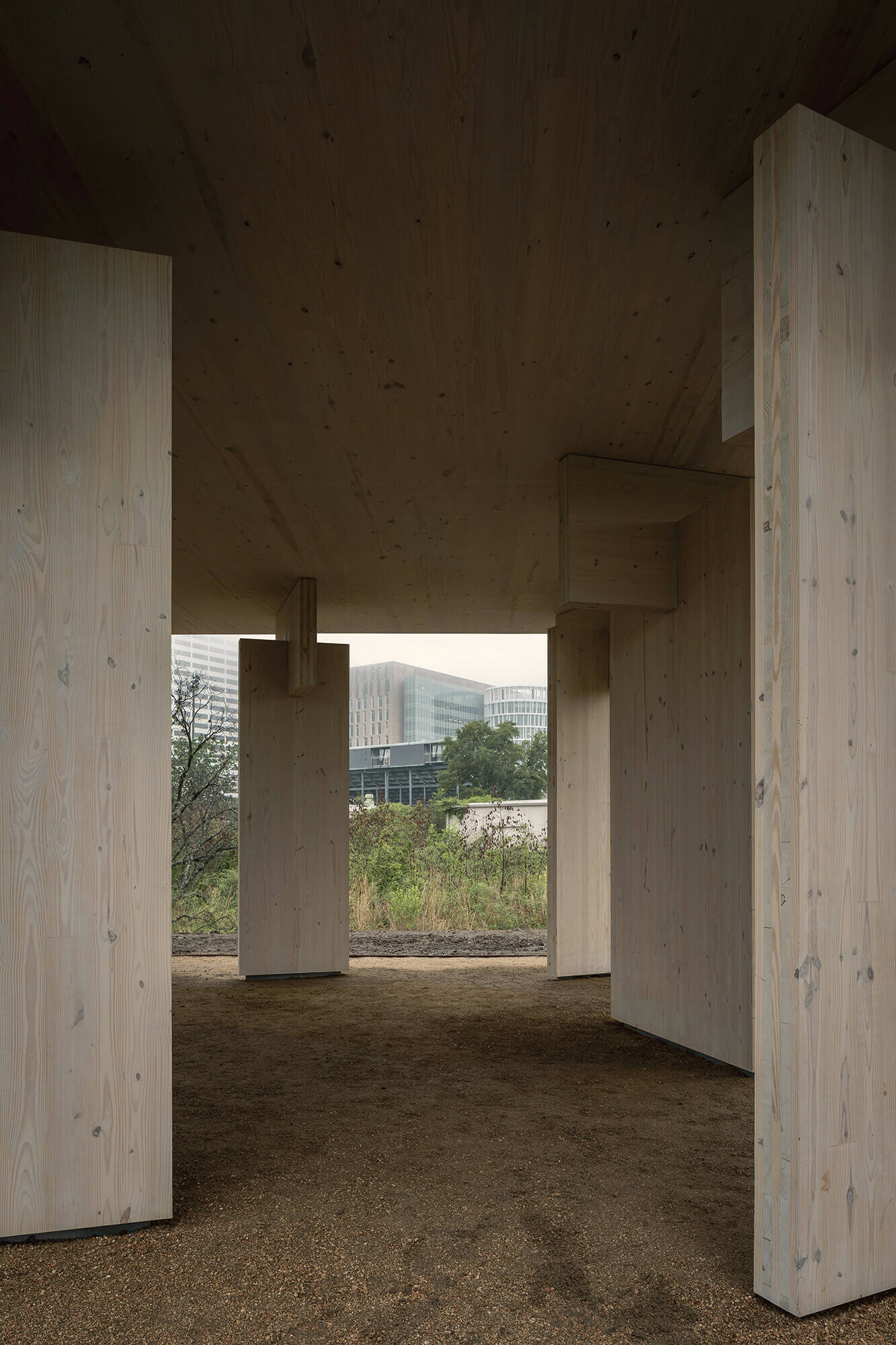


SCROLL TO TOP


This year’s Mass Timber Competition: Building to Net-Zero Carbon creates new opportunities for broader adoption of mass timber.

1 of 5


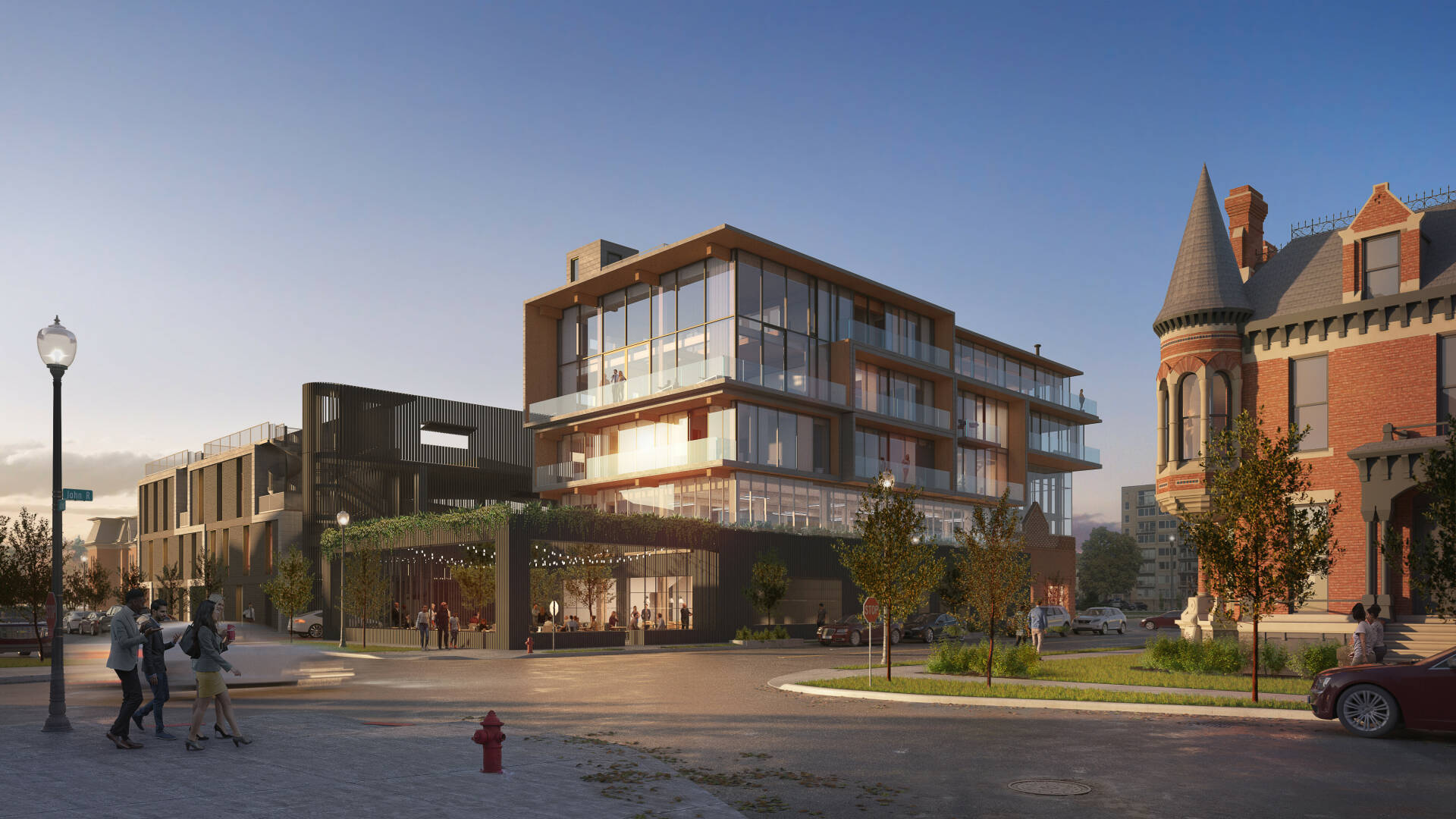
CODA Detroit
A 95,000-square-foot, five-story mixed-use mass timber residential project incorporating elements of historic preservation and new methods to address acoustical challenges. Its team comprises OOMBRA Architects, Brush Park Properties, IN Development Partners, JDH Engineering, Britt Peters and Associates, and AM Higley.
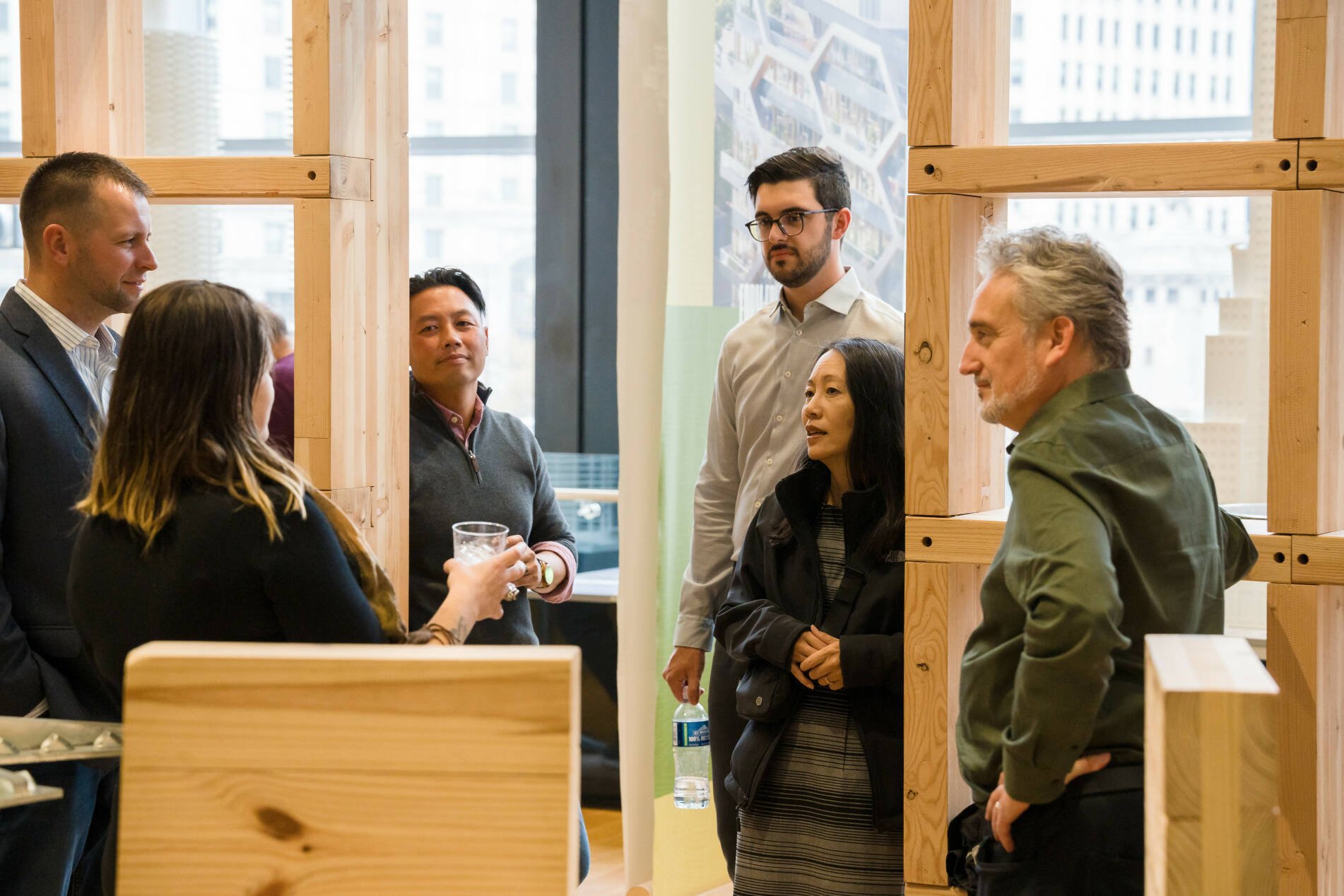
The award recipients were announced in Chicago in October at the REFRAMED exhibit at the Chicago Architecture Center, which also announced the REFRAMED exhibit run would be extended through January 7, 2024. The competition received coverage from major news and industry outlets including Architectural Record, The Architect’s Newspaper, and Structure Magazine, showcasing that design industry business media is responding to a readership increasingly interested in and considering mass timber.
The USDA Forest Service contributes $1 million of the competition’s prize funding and leverages the $1 million softwood lumber industry investment. To advance the market, award recipients will share lessons learned during project phases—including cost analyses, life cycle assessments, and other research results—with the broader design and construction community to encourage more widespread adoption of mass timber as a structural material in similar projects across the country.
The project teams that entered this year’s competition included a few mass timber veterans, but many more first-time adopters. Five project winners were chosen from among the 22 eligible entries, and the $2.2 million awarded was higher than the originally announced amount of $2 million, reflecting the high quality of the entries.
The five award recipients were:
Ryan Flom | Chief Marketing Officer of the SLB
The SLB was encouraged to see the architecture and construction community continue to expand implementation of mass timber systems in effective ways across a range of building types.
This year’s winning projects will not only provide much-needed housing and gathering spaces for their communities, but they will also demonstrate viable paths for other teams to build for
well-being, resilience, and a minimal carbon footprint.
The second consecutive annual initiative, funded jointly by the Softwood Lumber Board and USDA Forest Service (USDA), showcases larger-scale uses of mass timber and a commitment to prioritizing domestically sourced wood from sustainably managed forests. The competition helps expand the use of mass timber building solutions by funding innovative projects, creating additional downstream opportunities as all parties involved in a project—from the developer to the architect, engineer, and general contractor—become significantly more likely to start future ones.
EDUCATION HIGHLIGHTS

the 2,878 YE Goal
the 5,155 YE Goal
Wood Institute




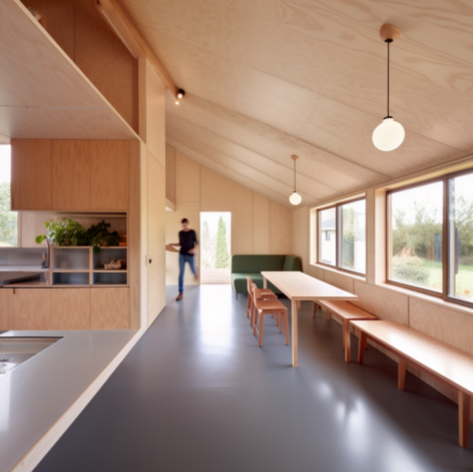

SLB NEWS

The accelerator projects in Atlanta and New York City use matching funds from the USDA Forest Service’s Wood Innovations Grants and other organizations, leveraging the impact of the SLB’s $50,000 investment in the $500,000 overall project. The two accelerators join Boston’s Mass Timber Accelerator Program, which launched in fall 2021 with funding from the SLB, the Forest Service, and the ClimateWorks Foundation. Boston’s accelerator announced three development projects for a second round of funding earlier this year.
Although both cities have constructed mass timber projects—such as the developer Jamestown’s 619 Ponce (left), a WoodWorks-supported mass timber office building in Atlanta—an accelerator program will provide important funding and expertise to less experienced project teams and build momentum in the cities.
The Atlanta Mass Timber Accelerator Program from the Georgia Forestry Foundation (GFF), in partnership with the City of Atlanta, received applications to support active private-development project teams in conducting early-design-phase mass timber technical and financial feasibility studies, with the technical support provided by WoodWorks. The NYC Mass Timber Studio will help increase the use of mass timber in New York City with the goal of reducing the embodied carbon in new construction. Like Atlanta’s program, it offers technical assistance from WoodWorks and funding for development teams to explore the benefits and assess the feasibility of incorporating mass timber into their building projects.
“These strategic investments are targeted to address barriers and provide the data necessary to support repeatable building systems and solutions that are better for the environment and the economy,” says SLB President and CEO Cees de Jager.
After closing submissions in November, the two accelerators will now decide which projects receive grants and participate in regular meetings for assistance and advisory feedback. Winning projects will be announced in the new year.
STORY 1 of 3
The SLB is supporting two new mass timber accelerator programs, working with jurisdictions, industry, and local governments to expand opportunities for mass timber projects while removing barriers and streamlining code compliance.
Expanding Markets With Mass Timber Accelerators
AWC HIGHLIGHTS


Hours Logged
Across All Events


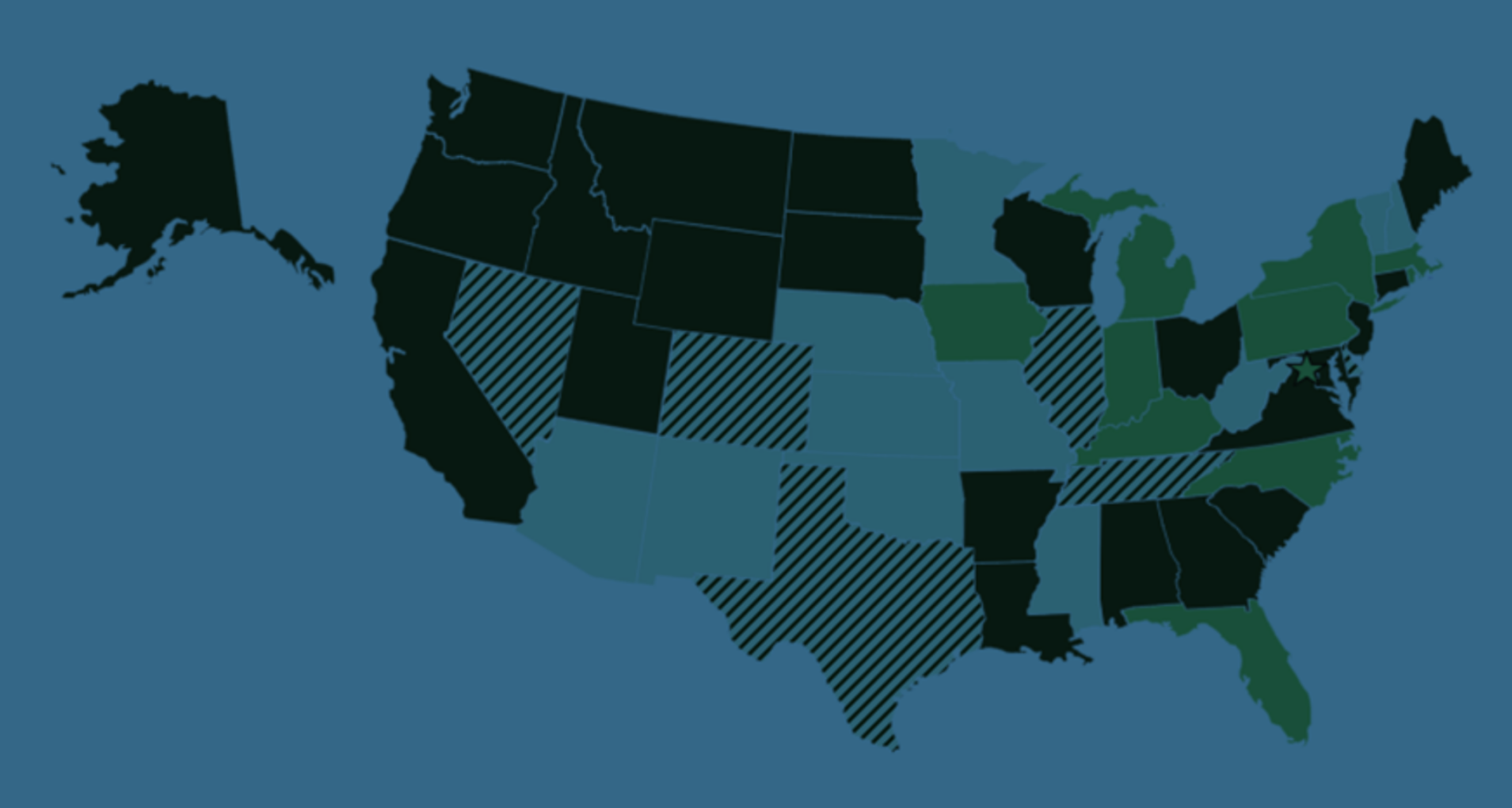


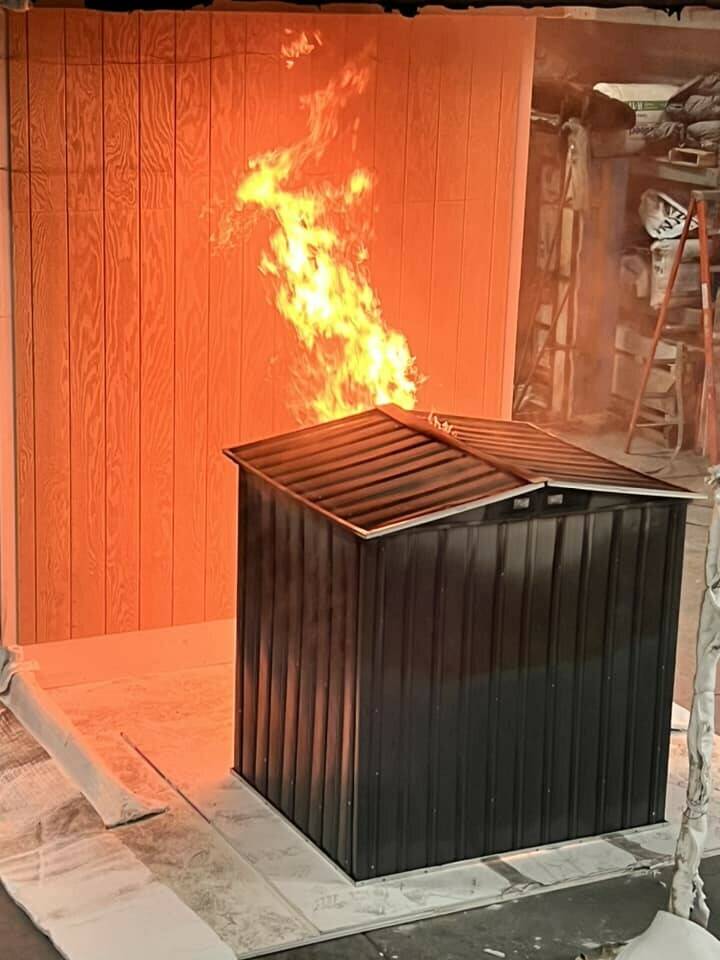

SLB NEWS
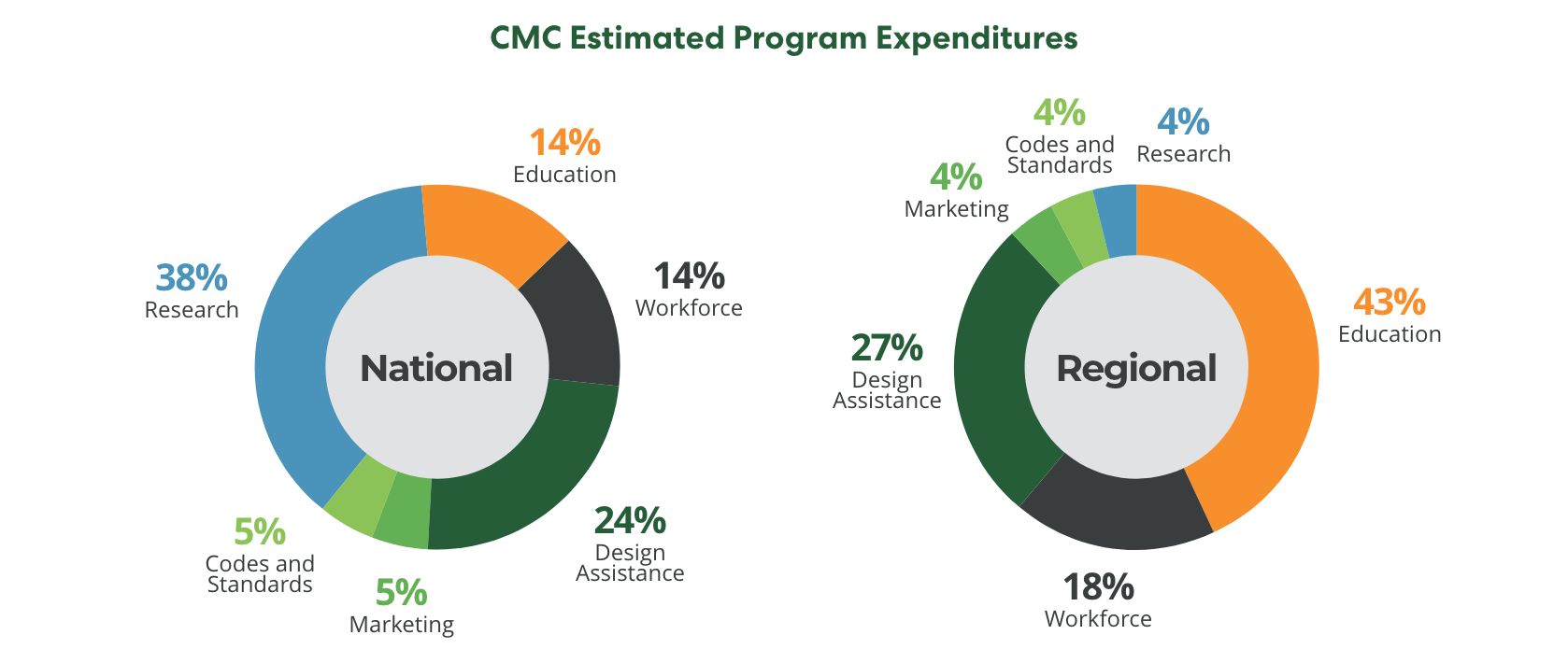
CMC, the first checkoff program established by a competing building material, was created “by producers frustrated with continual
loss of market share,” according to the checkoff’s website. “That frustration was compounded when program ideas surfaced that could
drive demand, but there was no way to fund multi-year, well-funded programs that would change outdated perceptions of concrete
masonry products,” CMC writes.
With a mission to “drive demand for locally made concrete masonry products” and a vision to “build exquisite, enduring communities
one block at a time,” the new checkoff program will have a $7.3M projected budget (minus reserves). CMC planning records show
the organization’s national and regional programs combined may spend up to $2.1 million (29%) on education, $1.8 million (26%) on design
assistance, and $1.5 million (16%) on research.
The CMC programs include marketing and promotions, codes and standards, education and research, workforce development, education,
and design assistance. You can learn more by visiting its public website.
After being established by the Department of Commerce, the Concrete Masonry Checkoff launched
a newsletter to members this fall and is seeking applications for a program director.
Concrete Masonry Checkoff Program Kicks Off
THINK WOOD HIGHLIGHTS








Leads (SQLs)
To Cumulative Total Of
Gained
the 26,400 YE Goal
20 MM BF
OF LUMBER
Projects

SLB NEWS
“The Softwood Lumber Board thanks Secretary Vilsack for appointing a strong slate of directors who reflect the diversity of the industry and will bring the unique perspectives from their regions,” said Cees de Jager, SLB President and CEO. “The SLB welcomes the newly appointed members and extends its thanks and appreciation to outgoing Directors Eric Cremers, Hugues Simon, and Caroline Dauzat for their leadership, service, and commitment to the industry.”
The appointees will serve three-year terms, effective January 1, 2024,
through December 31, 2026. The newly appointed members are:
Keith O’Rear, Weyerhaeuser, Prosper, TX (U.S. South, Large Seat)
Fritz R. Mason, Georgia Pacific, Atlanta, GA (U.S. South, Large Seat)
Ashlee Cribb, PotlatchDeltic, Spokane, WA (U.S. West, Flex Seat)
Craig Johnston, Forest City Trading Group, Portland, OR
(Importer Any Region, Small Seat)
The U.S. Department of Agriculture announced the appointment of four members to serve on the Softwood Lumber Board.
USDA Announces Appointments to the SLB
WOODWORKS HIGHLIGHTS

Michigan College of Pharmacy


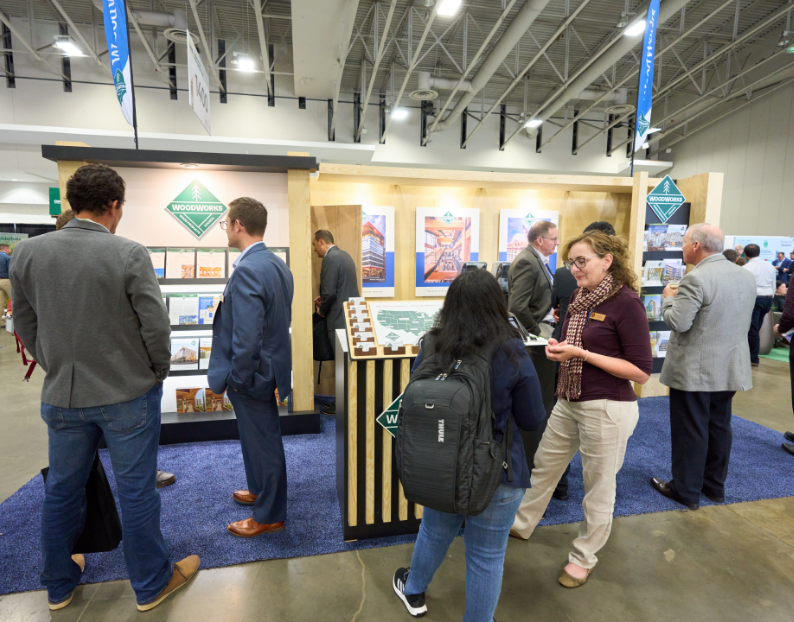

Events Boost
Reach Efficiently
Amid Multifamily Headwinds


influenced
YE Projection and 504 YE Goal
+ INDIRECTLY
INFLUENCED
(62 YTD Toward the 95 MM YE Goal)
(572 YTD Toward the 762 YE
Projection and 848 YE Goal)
of Incremental EWP
Structural Panels
461 YE Goal
35,105 YE Goal
SLB NEWS

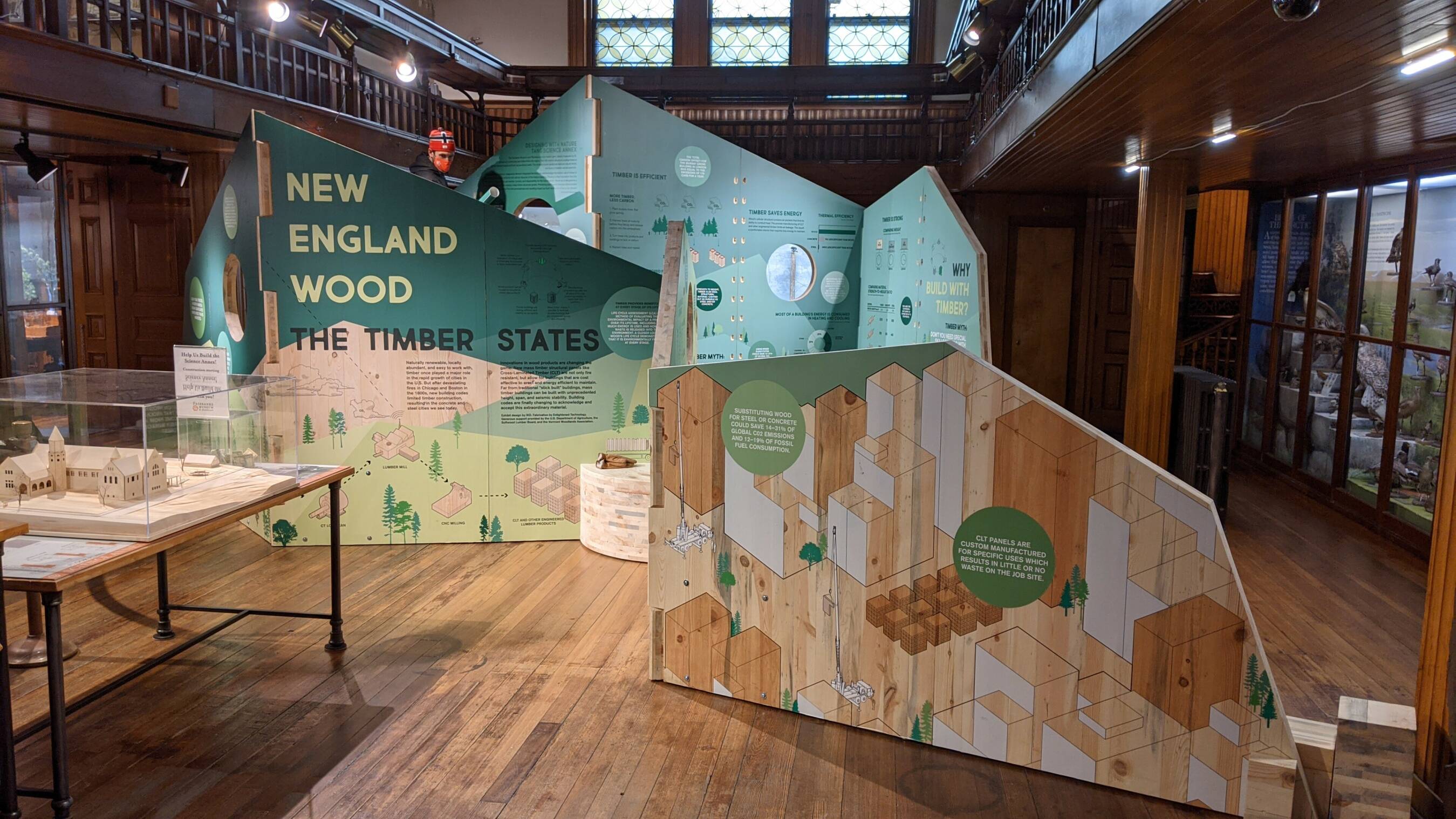
The interactive exhibit, created by design firm IKD with partial funding from the SLB, was originally designed to be exhibited at the Fairbanks Museum & Planetarium in St. Johnsbury, Vermont, which is constructing a 6,000-square-foot mass timber addition designed by Vermont Integrated Architecture. More than 50,000 people visited the exhibit in Vermont in 2022 and 2023, and an infographic based on the exhibit’s design was originally shared with investors and partners in the SLB’s 2021 Annual Report.
The exhibit will now be displayed in the gallery at the Portland Museum of Art, where it will support education around the museum’s planned $100 million mass timber building expansion design by LEVER Architecture. LEVER’s design for the Portland Museum of Art expansion was selected in a design competition from among 100 proposals, and it prioritizes inclusivity and sustainability. The firm was previously featured in a Think Wood Studio Spotlight and has helped pioneer the expanded use of mass timber in projects across the country.
These highly visible cultural projects, supported by the educational exhibit, raise mass timber’s profile with the design community and general public, ultimately contributing to mass timber construction’s upward trend.
An SLB-funded interactive exhibit about mass timber is on the move to Maine’s Portland Museum of Art, doubling the impact of a one-time investment.
SLB-Funded Exhibit Supports Mass Timber’s Upward Trend in the Northeast
If you'd like a printed version of the Q3 Report mailed to you,
please email info@softwoodlumberboard.org.
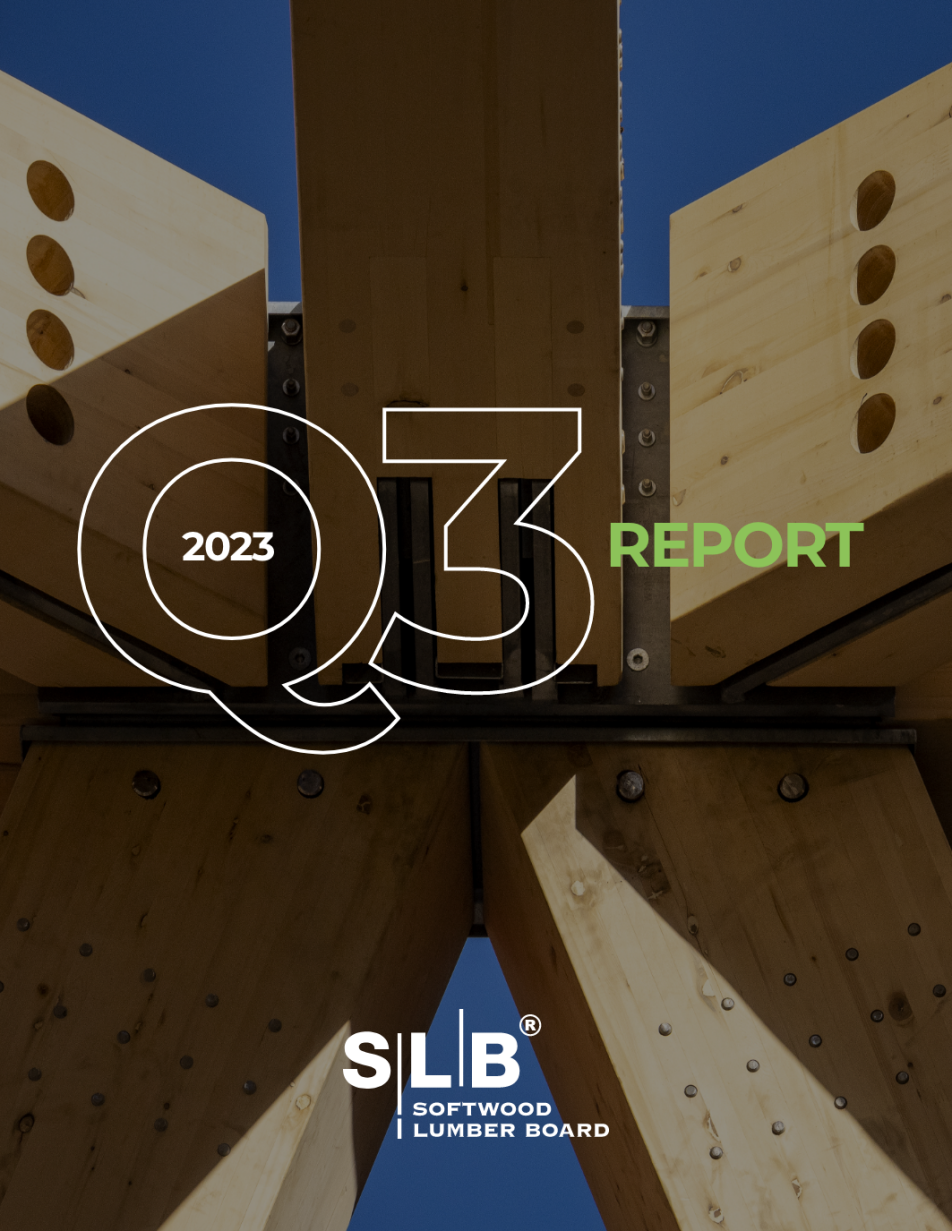



SCROLL TO TOP




Q3 HIGHLIGHTS

RAILCARS
RAILCARS
RAILCARS

facilitating wood use
1.2 MILLION
1,391
GOAL
2,100
2,100 MM bf 2023 goal


1 of 5


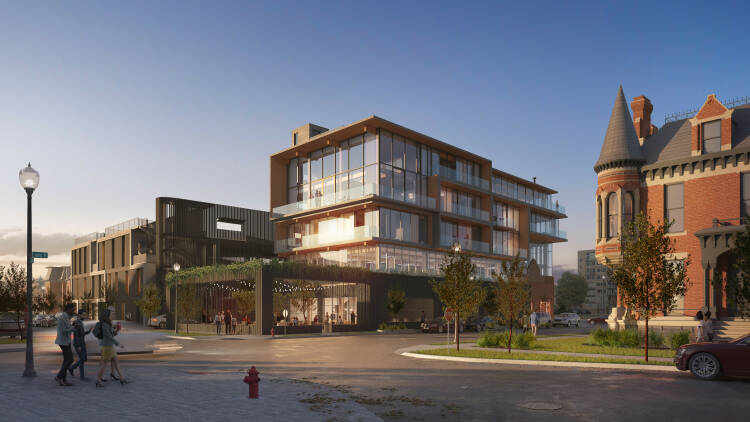
CODA Detroit
A 95,000-square-foot, five-story mixed-use mass timber residential project incorporating elements of historic preservation and new methods to address acoustical challenges. Its team comprises OOMBRA Architects, Brush Park Properties, IN Development Partners, JDH Engineering, Britt Peters and Associates, and AM Higley.
The project teams that entered this year’s competition included a few mass timber veterans, but many more first-time adopters. Five project winners were chosen from among the 22 eligible entries, and the $2.2 million awarded was higher than the originally announced amount of $2 million, reflecting the high quality of the entries.
The five award recipients were:

Ryan Flom
Chief Marketing Officer of the SLB


The SLB was encouraged to see the architecture and construction community continue to expand implementation of mass timber systems in effective ways across a range of building types. This year’s winning projects will not only provide much-needed housing and gathering spaces for their communities, but they will also demonstrate viable paths for other teams to build for well-being, resilience, and a minimal carbon footprint.
The USDA Forest Service contributes $1 million of the competition’s prize funding and leverages the $1 million softwood lumber industry investment.
To advance the market, award recipients will share lessons learned during project phases—including cost analyses, life cycle assessments, and other research results—with the broader design and construction community to encourage more widespread adoption of mass timber as a structural material in similar projects across the country.
The award recipients were announced in Chicago in October at the REFRAMED exhibit at the Chicago Architecture Center, which also announced the REFRAMED exhibit run would be extended through January 7, 2024. The competition received coverage from major news and industry outlets including Architectural Record, The Architect’s Newspaper, and Structure Magazine, showcasing that design industry business media is responding to a readership increasingly interested in and considering mass timber.
This year’s Mass Timber Competition: Building to Net-Zero Carbon creates new opportunities for broader adoption of mass timber.
The second consecutive annual initiative,
funded jointly by the Softwood Lumber Board and USDA Forest Service (USDA), showcases larger-scale uses of mass timber and a commitment to prioritizing domestically sourced wood from sustainably managed forests.
The competition helps expand the use of mass timber building solutions by funding innovative projects, creating additional downstream opportunities as all parties involved in a project—from the developer
to the architect, engineer, and general contractor—become significantly more
likely to start future ones.



WOOD INSTITUTE
(2,208 YTD Toward the 2,878 YE Goal)

Finds Enthusiastic Audience

User Base of Key AEC Groups

Excited About Wood Design
SLB NEWS

The accelerator projects in Atlanta and New York City use matching funds from the USDA Forest Service’s Wood Innovations Grants and other organizations, leveraging the impact of the SLB’s $50,000 investment in the $500,000 overall project. The two accelerators join Boston’s Mass Timber Accelerator Program, which launched in fall 2021 with funding from the SLB, the Forest Service, and the ClimateWorks Foundation. Boston’s accelerator announced three development projects for a second round of funding earlier this year.
Although both cities have constructed mass timber projects—such as the developer Jamestown’s 619 Ponce (below), a WoodWorks-supported mass timber office building in Atlanta—an accelerator program will provide important funding and expertise to less experienced project teams and build momentum in the cities.
The Atlanta Mass Timber Accelerator Program
from the Georgia Forestry Foundation (GFF), in partnership with the City of Atlanta, received applications to support active private-development project teams in conducting early-design-phase mass timber technical and financial feasibility studies, with the technical support provided by WoodWorks. The NYC Mass Timber Studio will help increase the use of mass timber in New York City with the goal of reducing the embodied carbon in new construction. Like Atlanta’s program, it offers technical assistance from WoodWorks and funding for development teams to explore the benefits and assess the feasibility of incorporating mass timber into their building projects.
“These strategic investments are targeted to address barriers and provide the data necessary to support repeatable building systems and solutions that are better for the environment and the economy,” says SLB President and CEO Cees de Jager.
After closing submissions in November, the two accelerators will now decide which projects receive grants and participate in regular meetings for assistance and advisory feedback. Winning projects will be announced in the new year.
The SLB is supporting two new mass timber accelerator programs, working with jurisdictions, industry, and local governments to expand opportunities for mass timber projects while removing barriers and streamlining code compliance.
Expanding Markets With Mass Timber Accelerators




Codes Emerge as Priority Issues


and Education
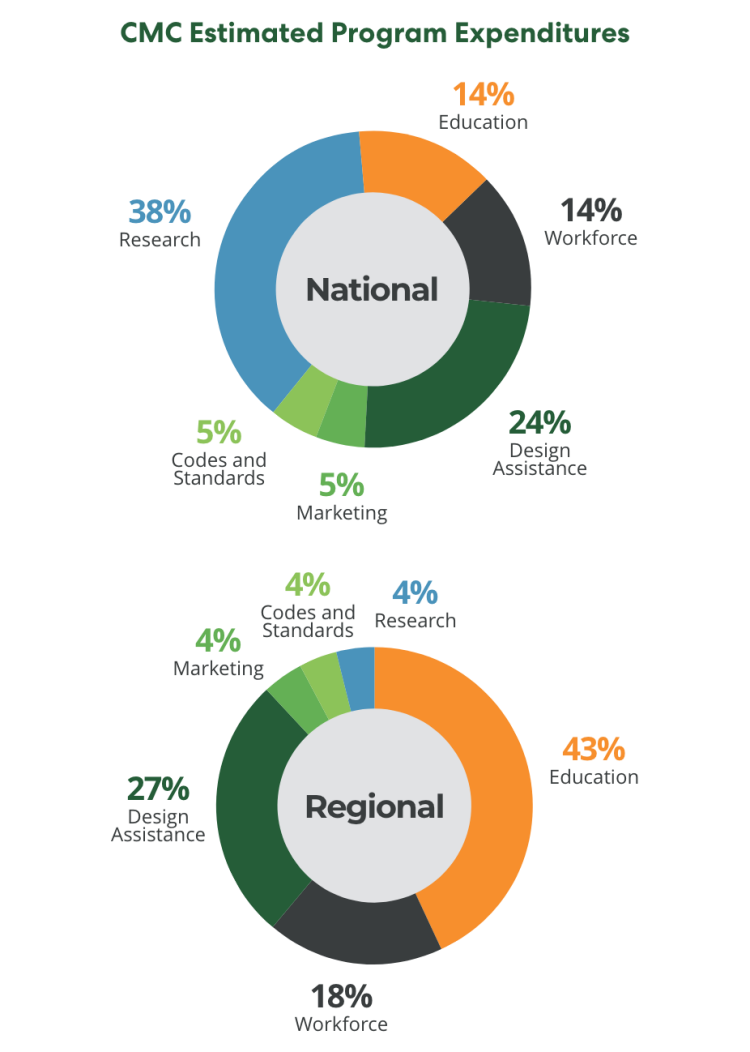
CMC, the first checkoff program established by a competing building material, was created “by producers frustrated with continual loss of market share,” according to the checkoff’s website. “That frustration was compounded when program ideas surfaced that could drive demand, but there was no way to fund multi-year, well-funded programs that would change outdated perceptions of concrete
masonry products,” CMC writes.
With a mission to “drive demand for locally made concrete masonry products” and a vision to “build exquisite, enduring communities one block at a time,” the new checkoff program will have a $7.3M projected budget (minus reserves). CMC planning records show the organization’s national and regional programs combined may spend up to $2.1 million (29%) on education, $1.8 million (26%) on design assistance, and $1.5 million (16%) on research.
The CMC programs include marketing and promotions, codes and standards, education and research, workforce development, education,
and design assistance. You can learn more by visiting its public website.
After being established by the Department of Commerce, the Concrete Masonry Checkoff launched
a newsletter to members this fall and is seeking applications for a program director.
Concrete Masonry Checkoff Program Kicks Off
SLB NEWS

To Cumulative Total Of


Leads (SQLs)

Online Resource for “Mass Timber”


The appointees will serve three-year terms,
effective January 1, 2024, through December 31, 2026. The newly appointed members are:
Keith O’Rear, Weyerhaeuser, Prosper, TX (U.S. South, Large Seat)
Fritz R. Mason, Georgia Pacific, Atlanta, GA (U.S. South, Large Seat)
Ashlee Cribb, PotlatchDeltic, Spokane, WA (U.S. West, Flex Seat)
Craig Johnston, Forest City Trading Group, Portland, OR (Importer Any Region, Small Seat)
“The Softwood Lumber Board thanks Secretary Vilsack for appointing a strong slate of directors who reflect the diversity of the industry and will bring the unique perspectives from their regions,” said Cees de Jager, SLB President and CEO. “The SLB welcomes the newly appointed members and extends its thanks and appreciation to outgoing Directors Eric Cremers, Hugues Simon, and Caroline Dauzat for their leadership, service, and commitment to the industry.”
The U.S. Department of Agriculture announced the appointment of four members to serve on the Softwood Lumber Board.
USDA Announces Appointments to the SLB
SLB NEWS


(374 YTD Toward the 499
YE Projection and 504 YE Goal)


Boost Reach Efficiently

Michigan College of Pharmacy

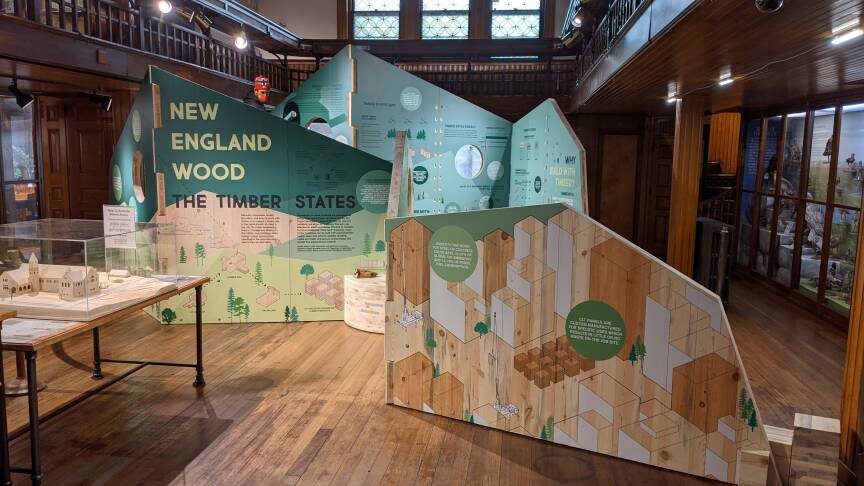
The interactive exhibit, created by design firm IKD with partial funding from the SLB, was originally designed to be exhibited at the Fairbanks Museum & Planetarium in St. Johnsbury, Vermont, which is constructing a 6,000-square-foot mass timber addition designed by Vermont Integrated Architecture. More than 50,000 people visited the exhibit in Vermont in 2022 and 2023, and an infographic based on the exhibit’s design was originally shared with investors and partners in the SLB’s 2021 Annual Report.
The exhibit will now be displayed in the gallery at the Portland Museum of Art, where it will support education around the museum’s planned $100 million mass timber building expansion design by LEVER Architecture. LEVER’s design for the Portland Museum of Art expansion was selected in a design competition from among 100 proposals, and it prioritizes inclusivity and sustainability. The firm was previously featured in a Think Wood Studio Spotlight and has helped pioneer the expanded use of mass timber in projects across the country.
These highly visible cultural projects, supported by
the educational exhibit, raise mass timber’s profile with the design community and general public, ultimately contributing to mass timber construction’s upward trend.
An SLB-funded interactive exhibit about mass timber is on the move to Maine’s Portland Museum of Art, doubling the impact of a one-time investment.
SLB-Funded
Exhibit Supports Mass Timber’s Upward Trend in the Northeast
SLB NEWS
SCROLL TO TOP

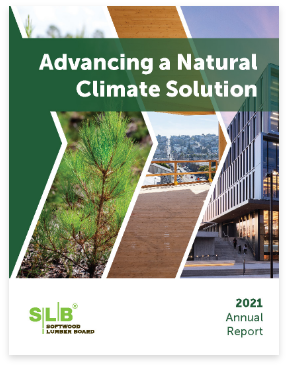



If you'd like a printed version of the
Q3 Report mailed to you, please email info@softwoodlumberboard.org.

of the Impact of the SLB
